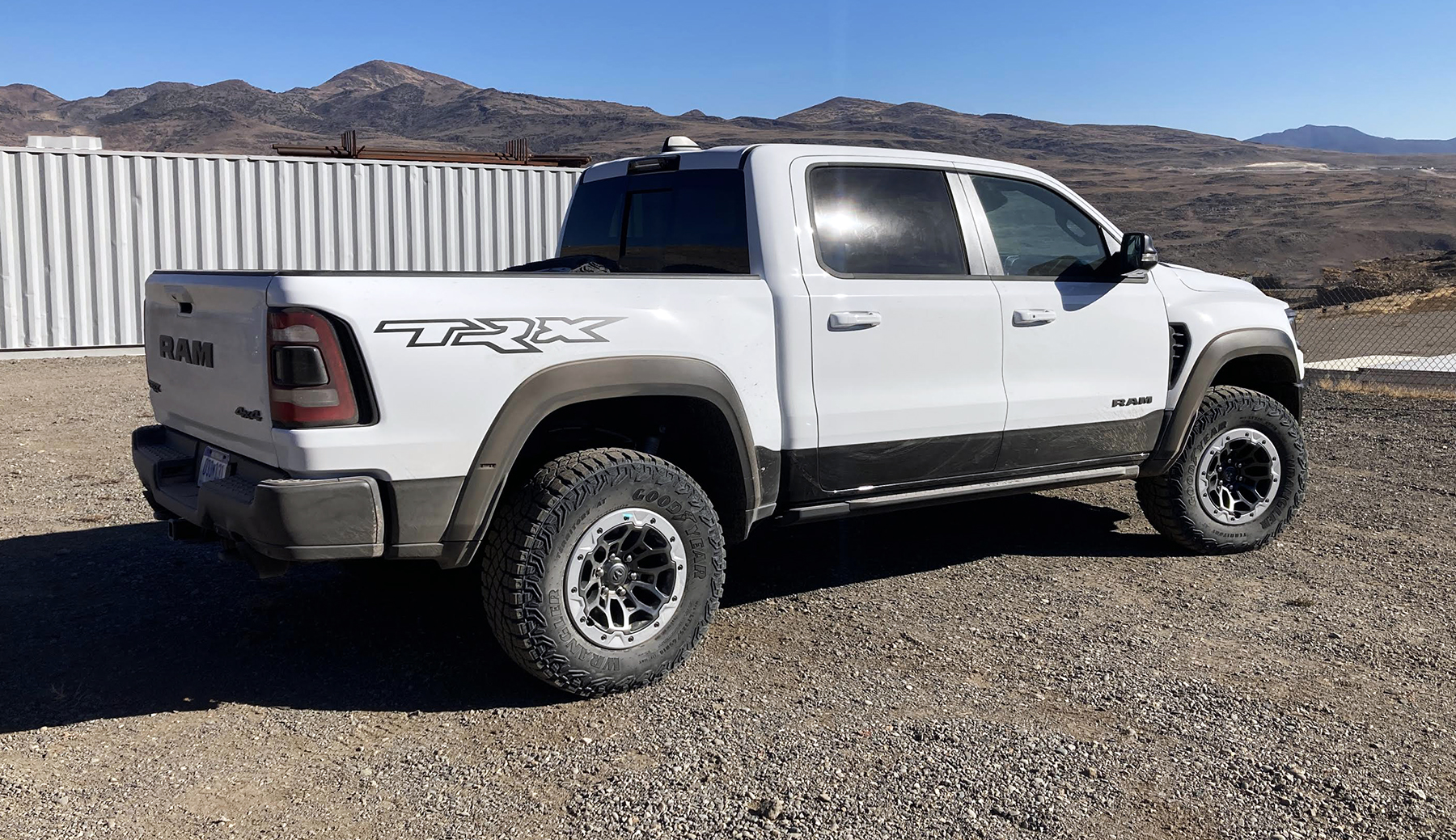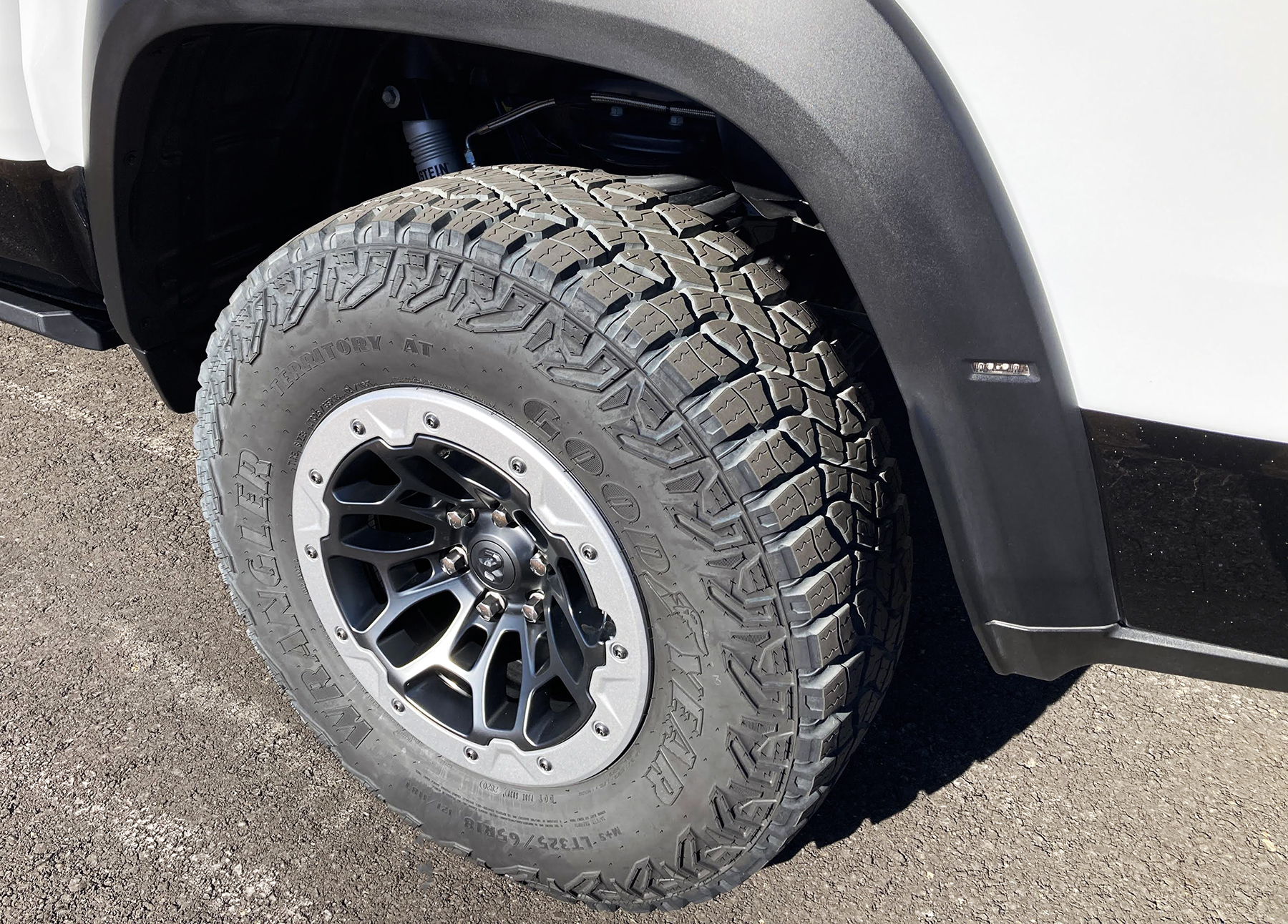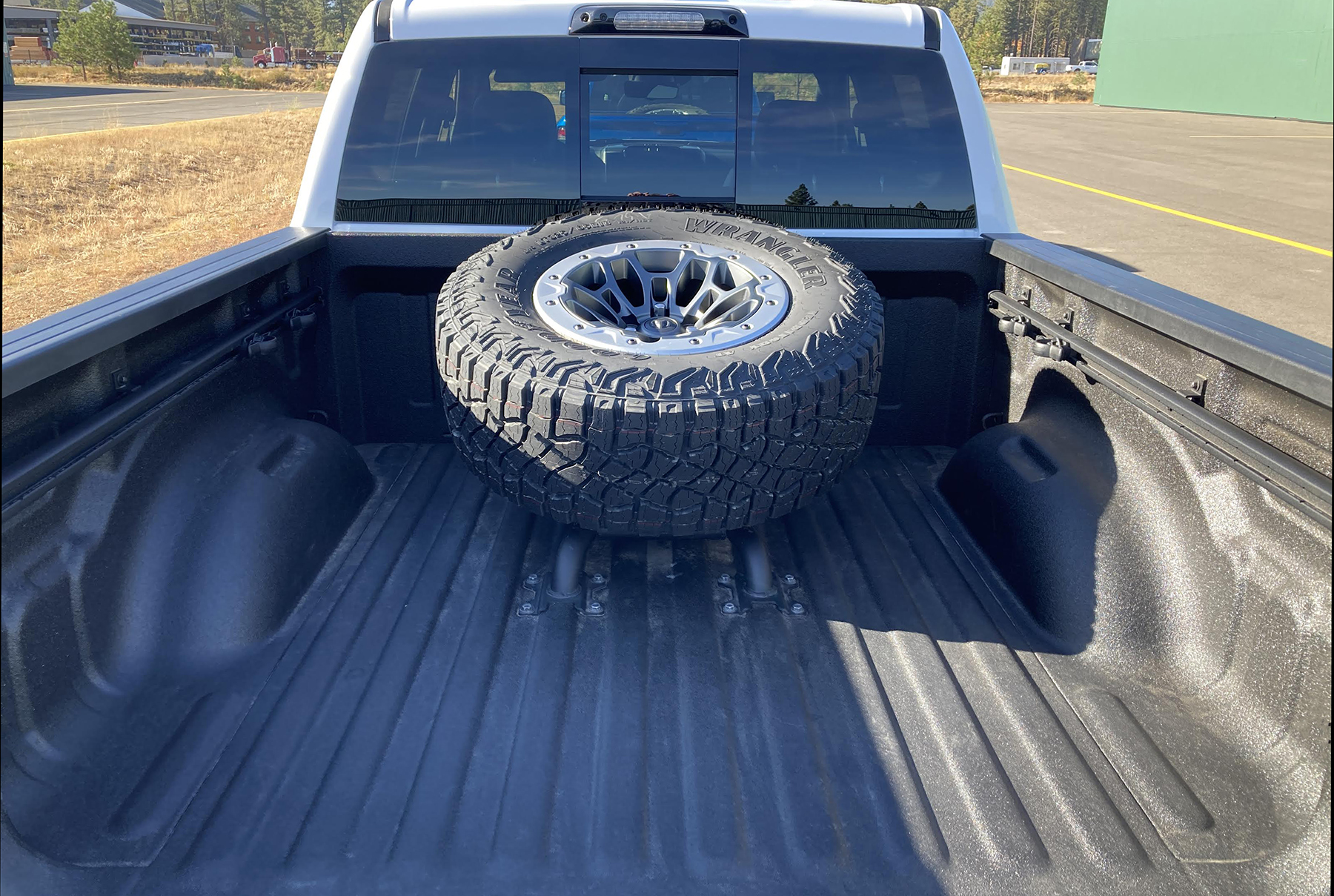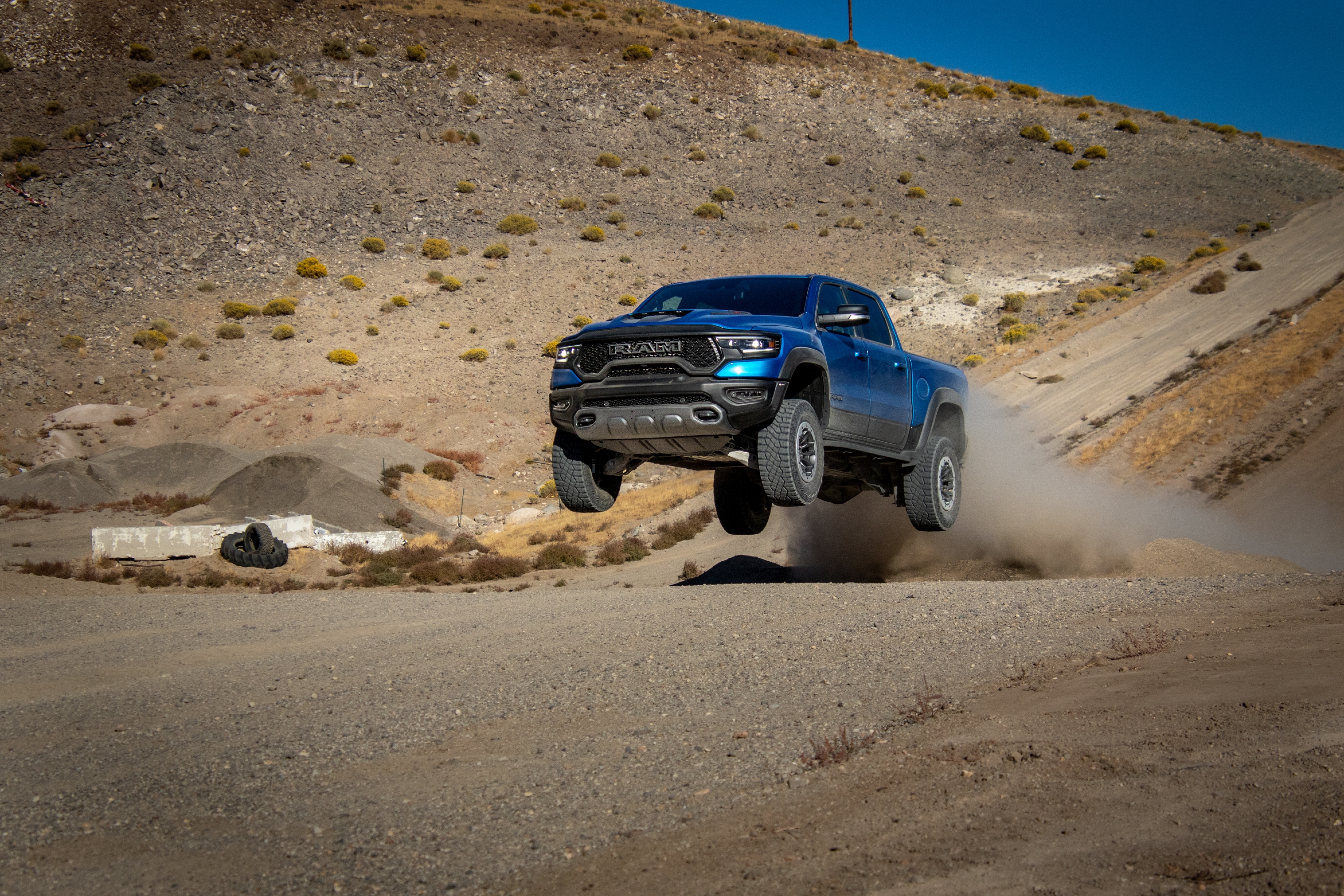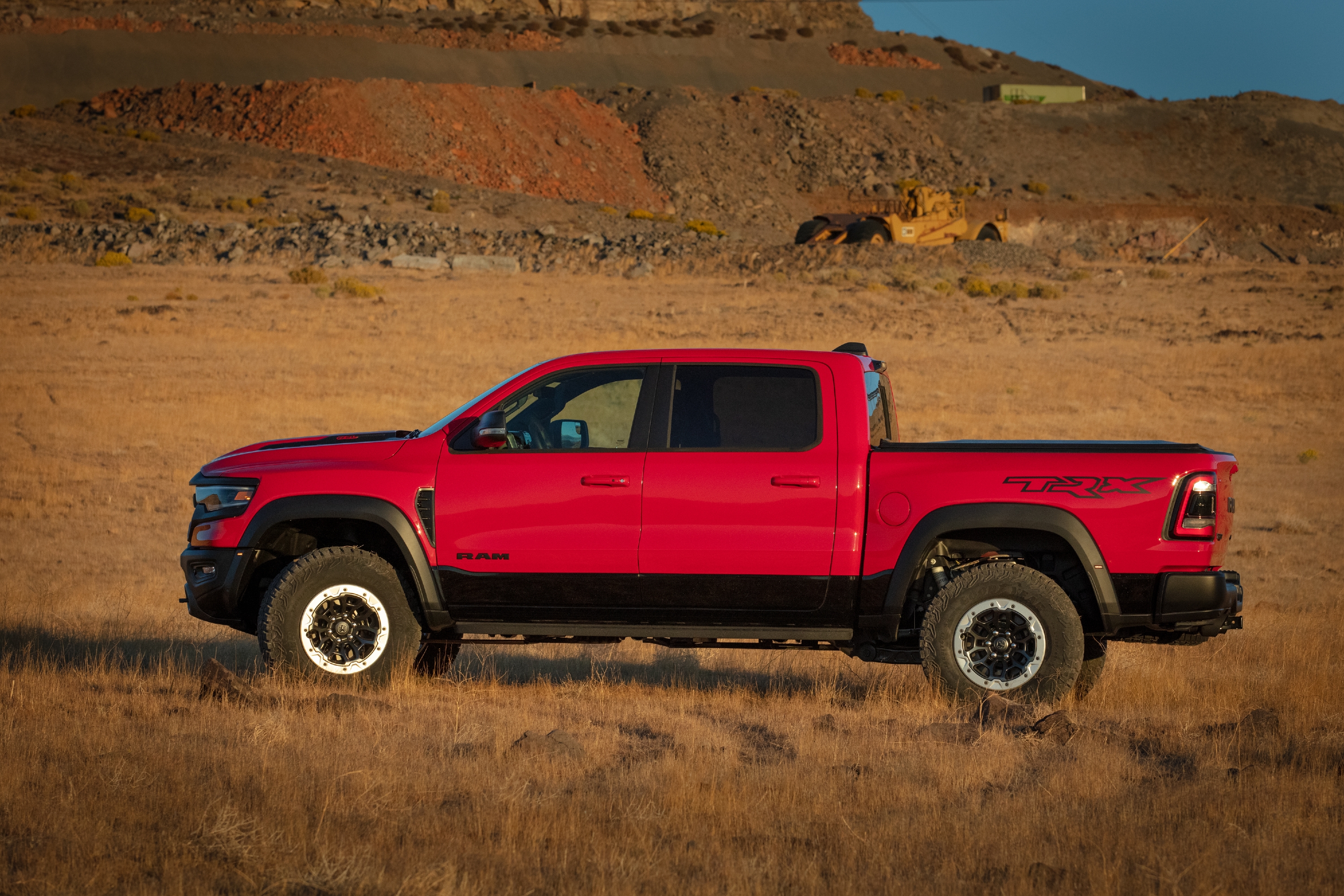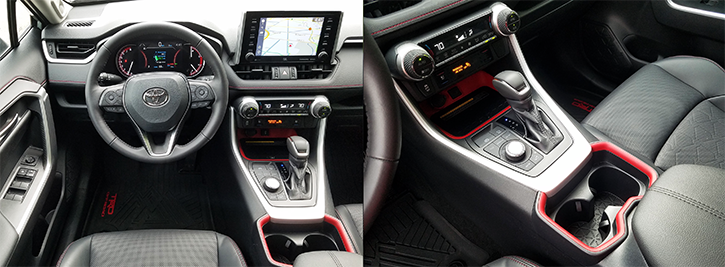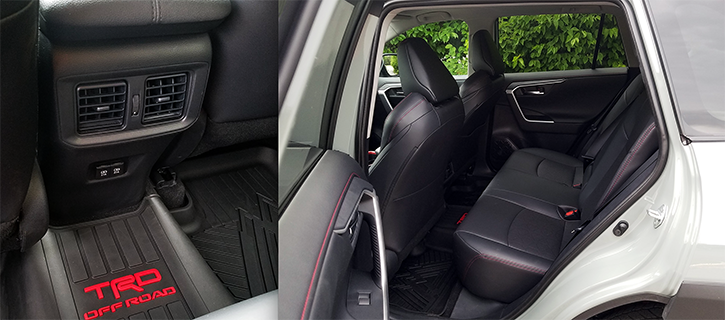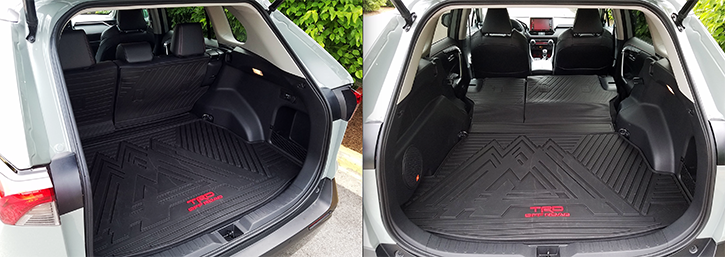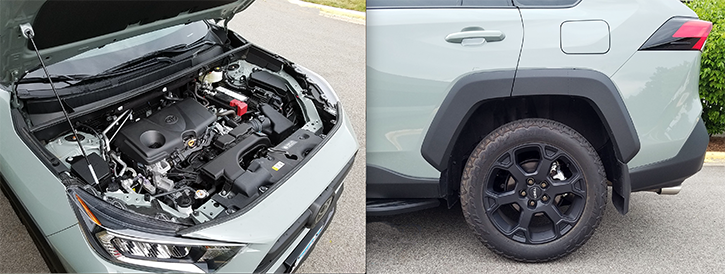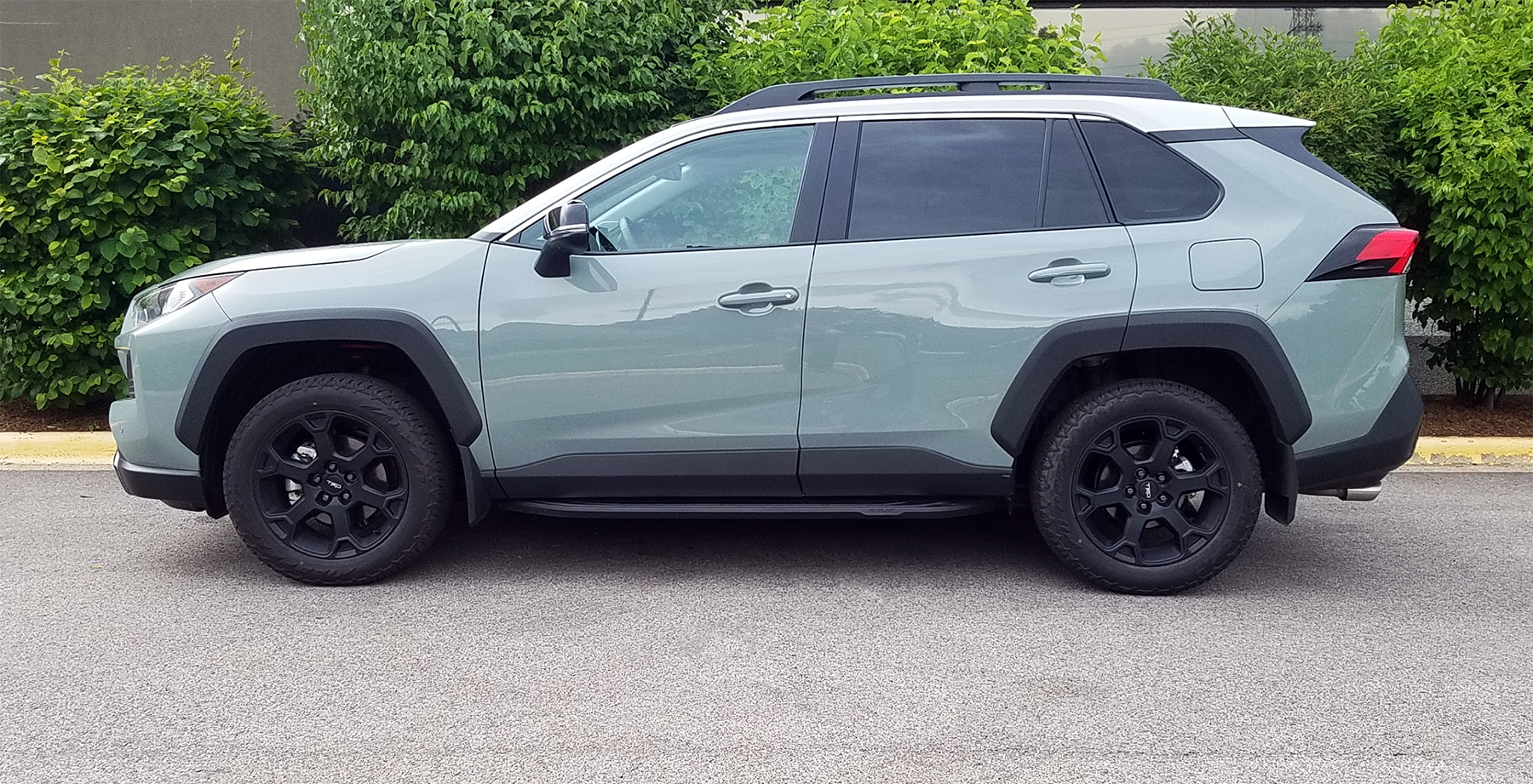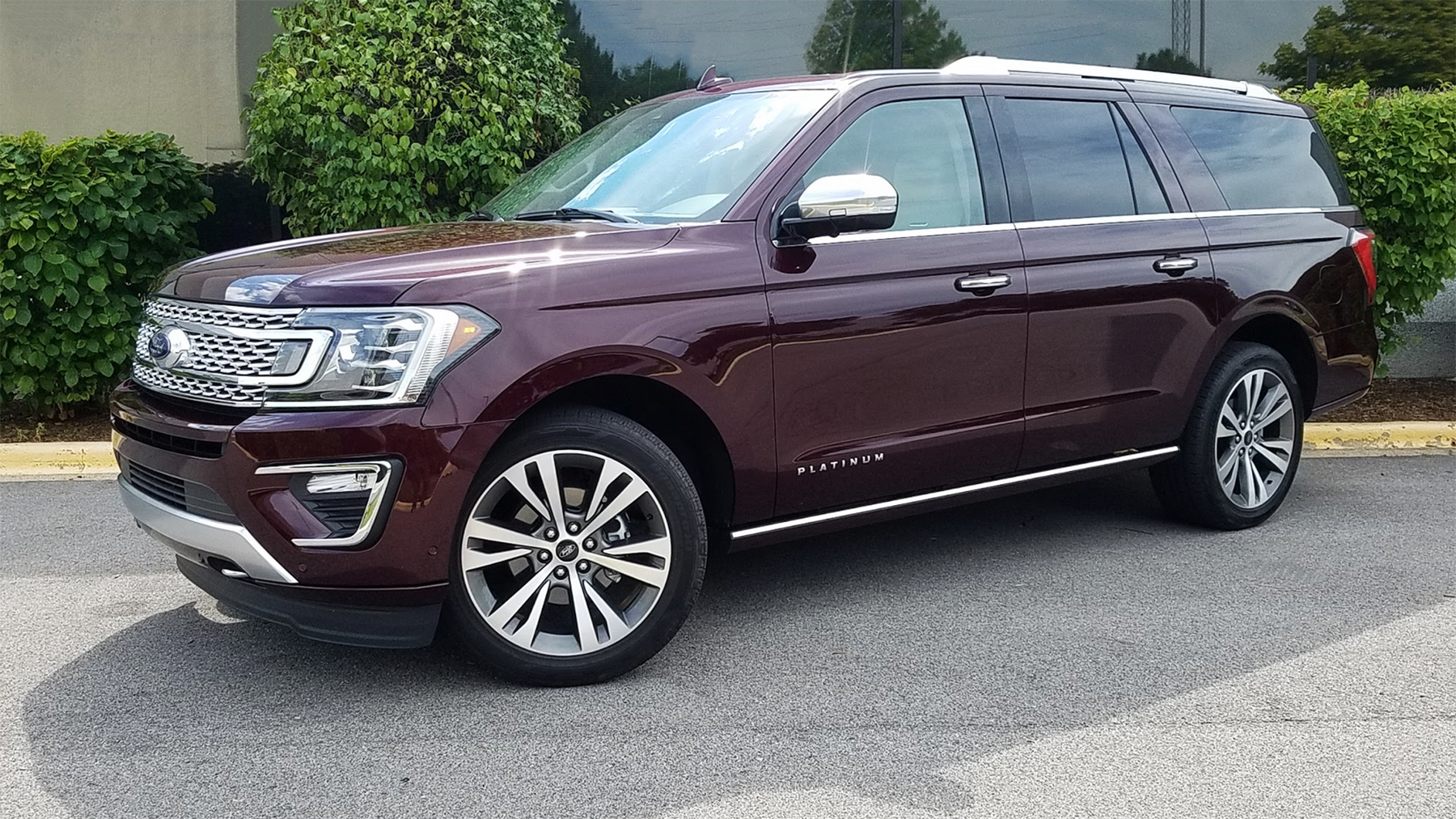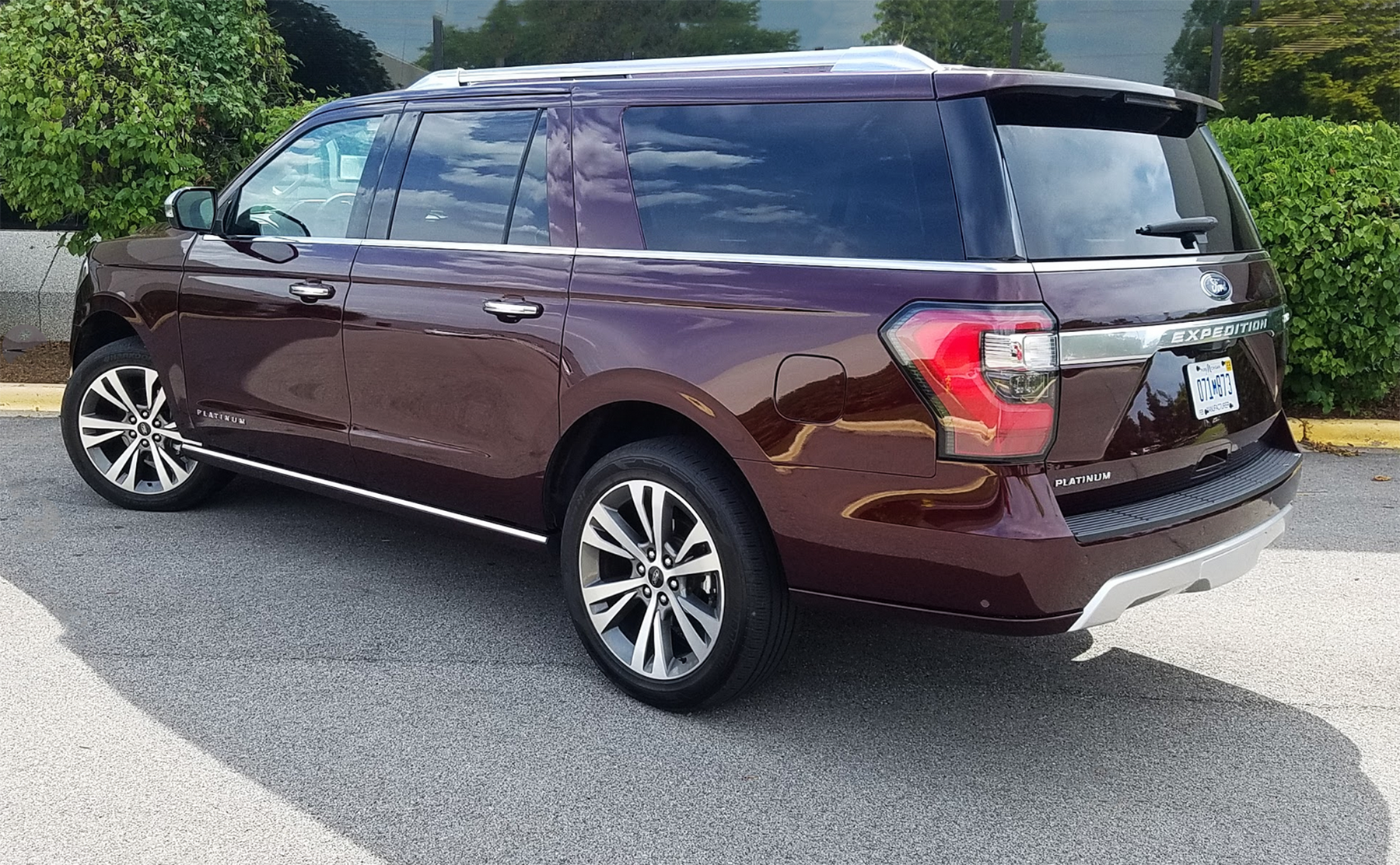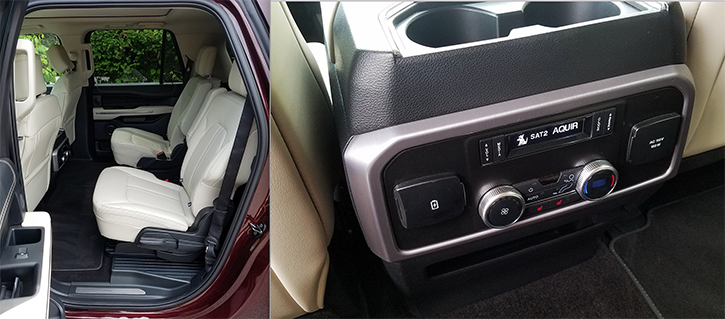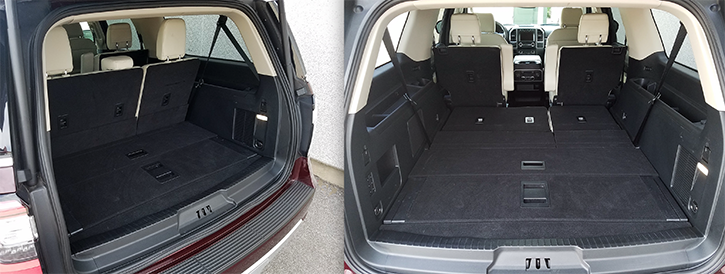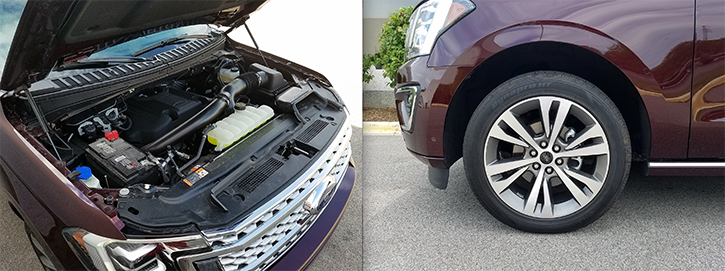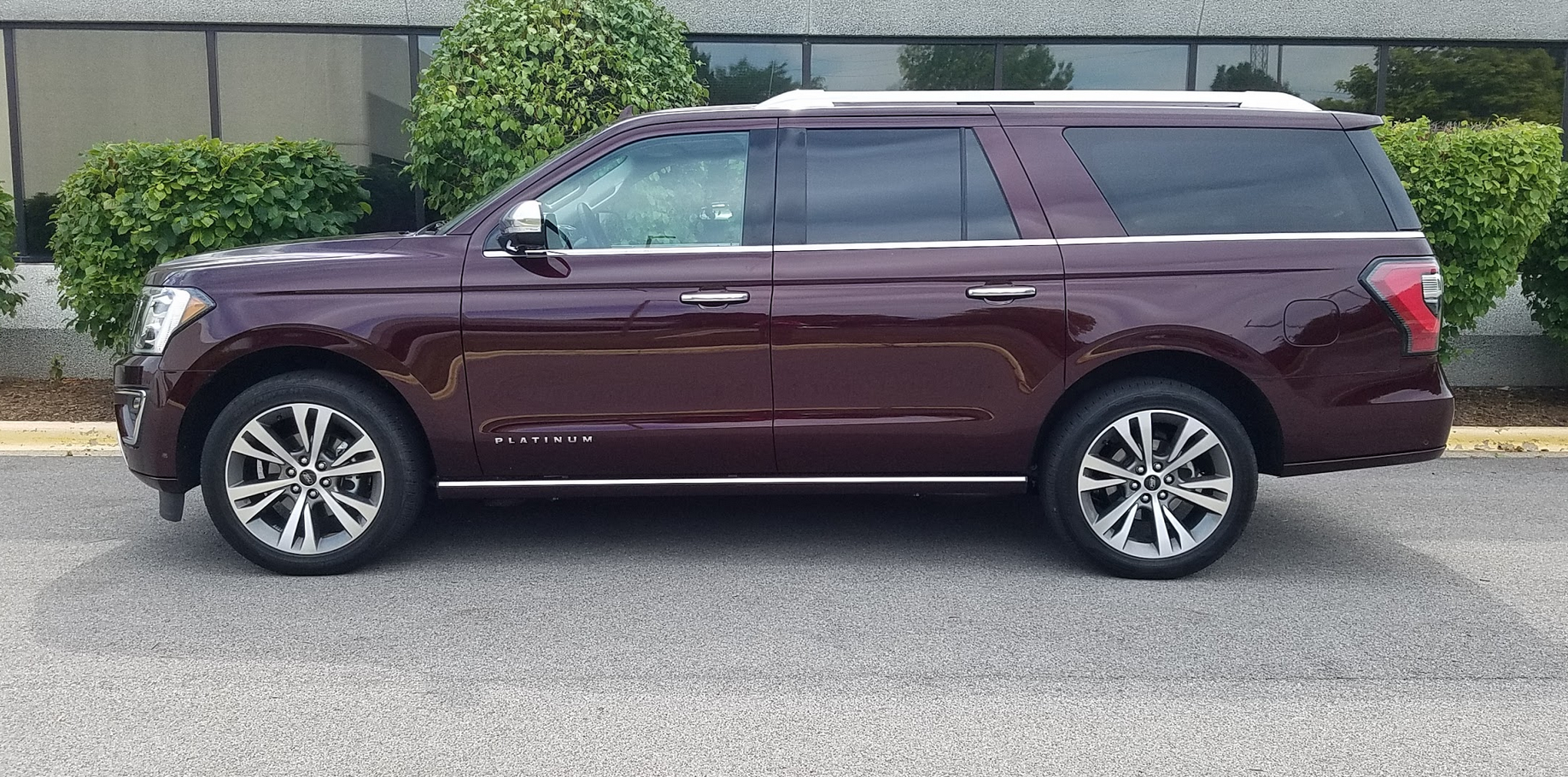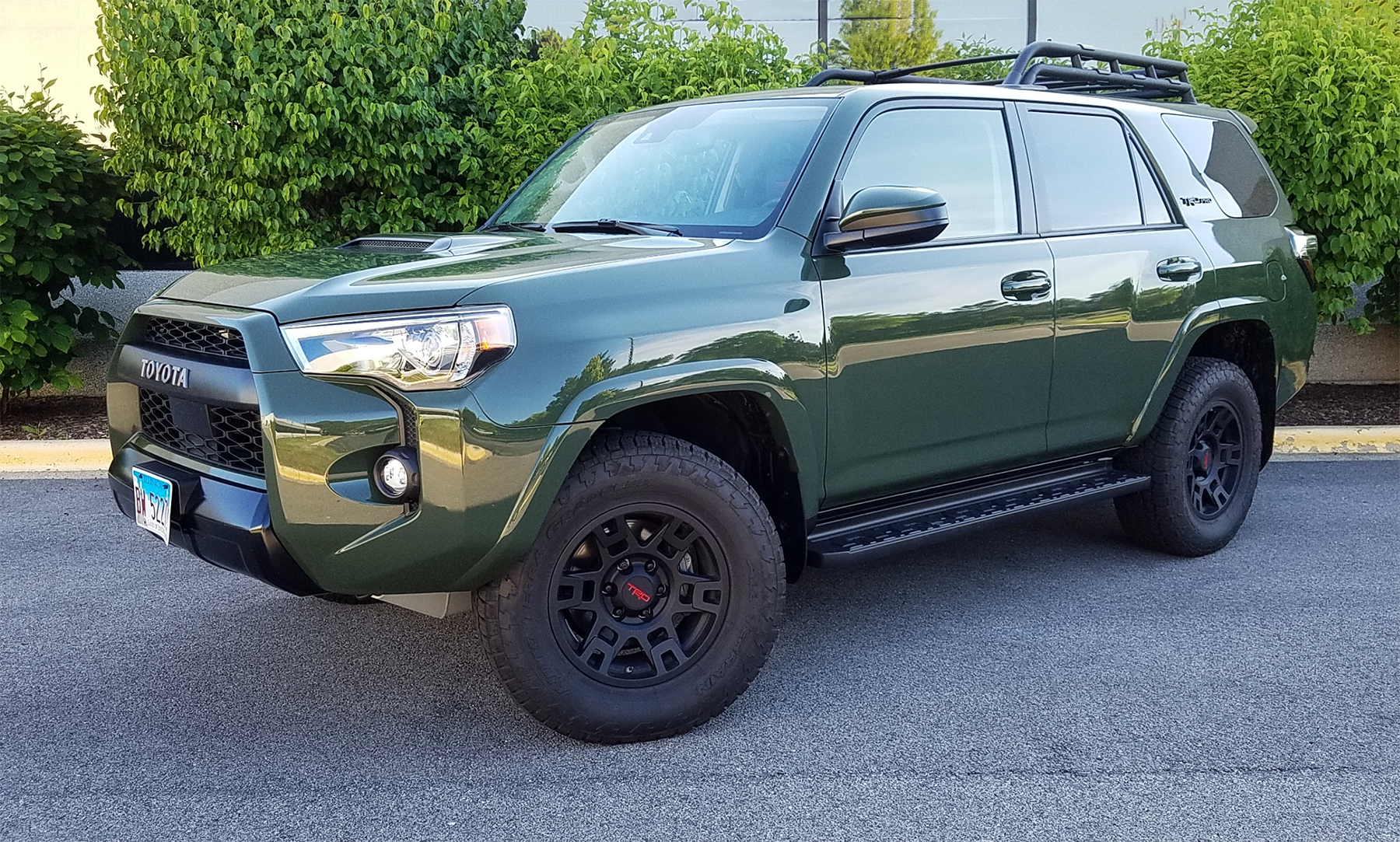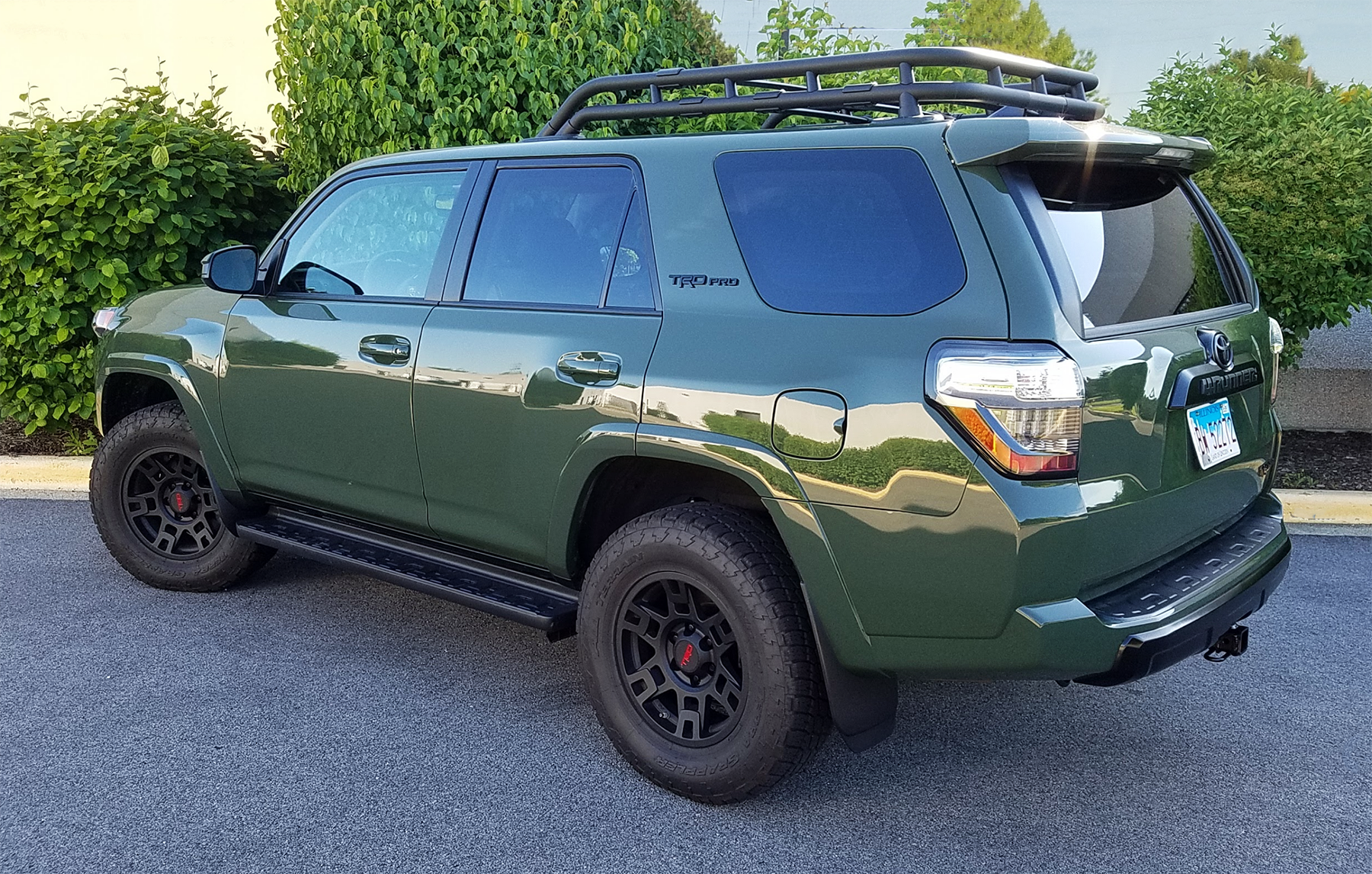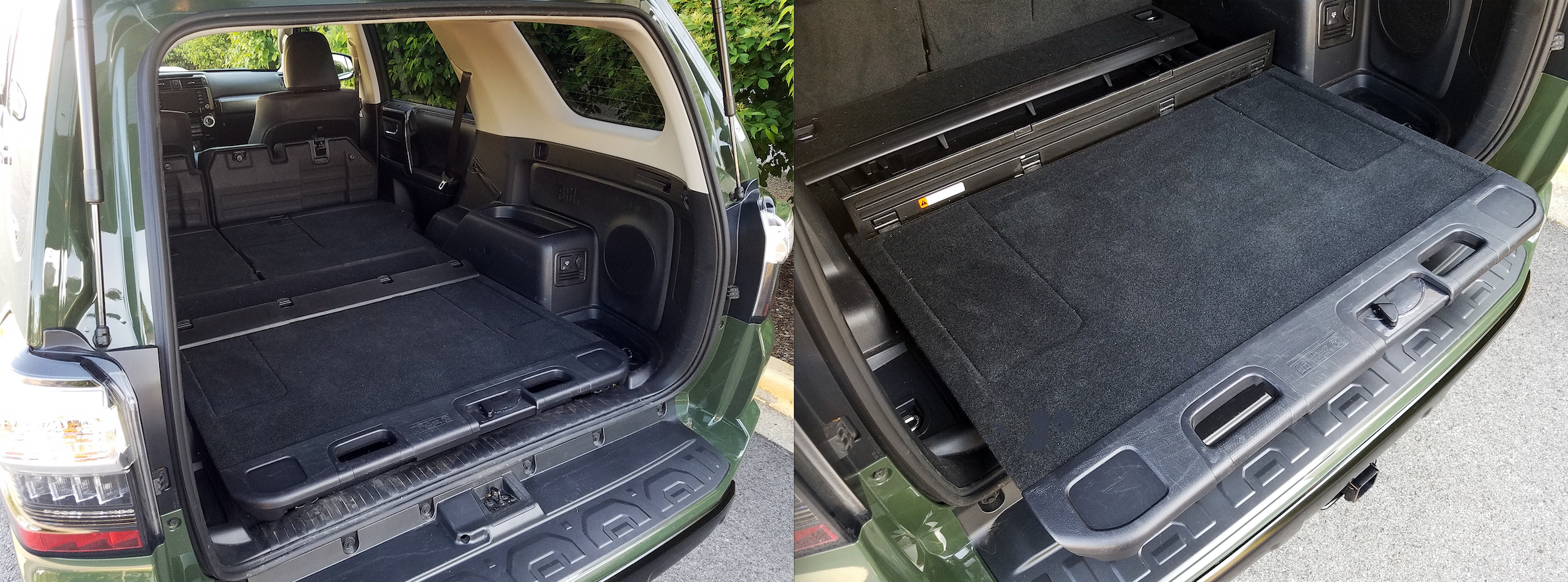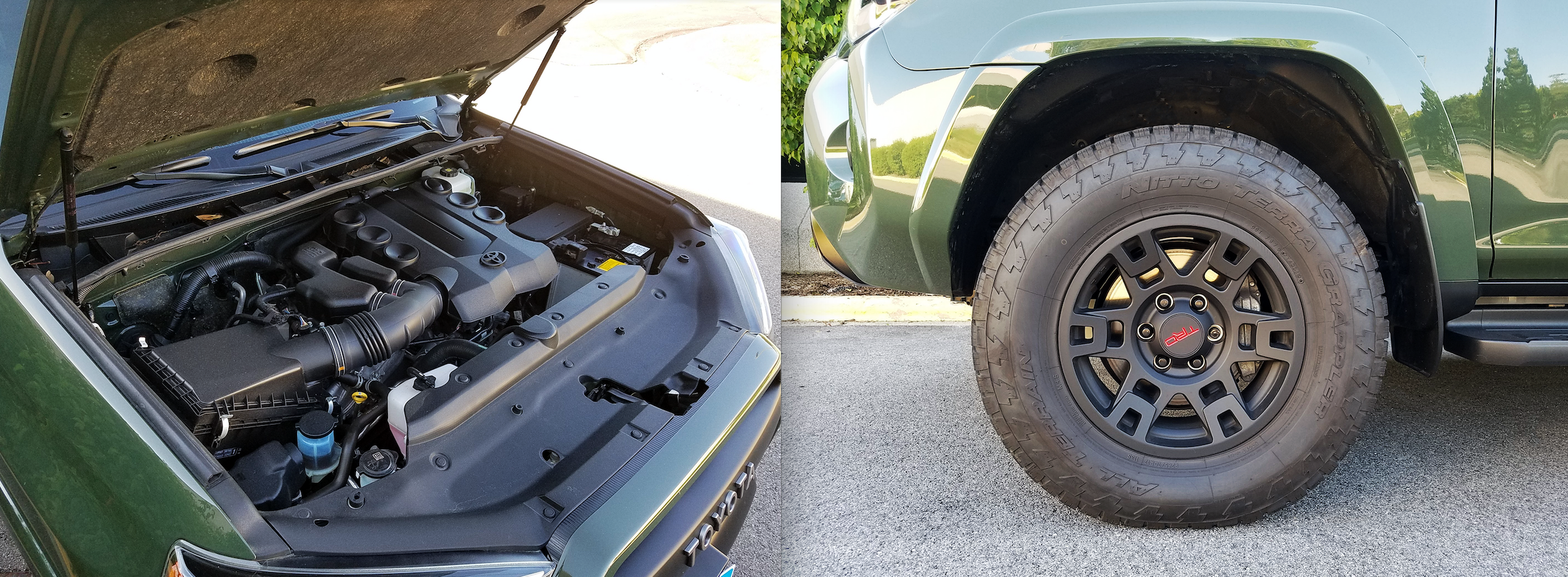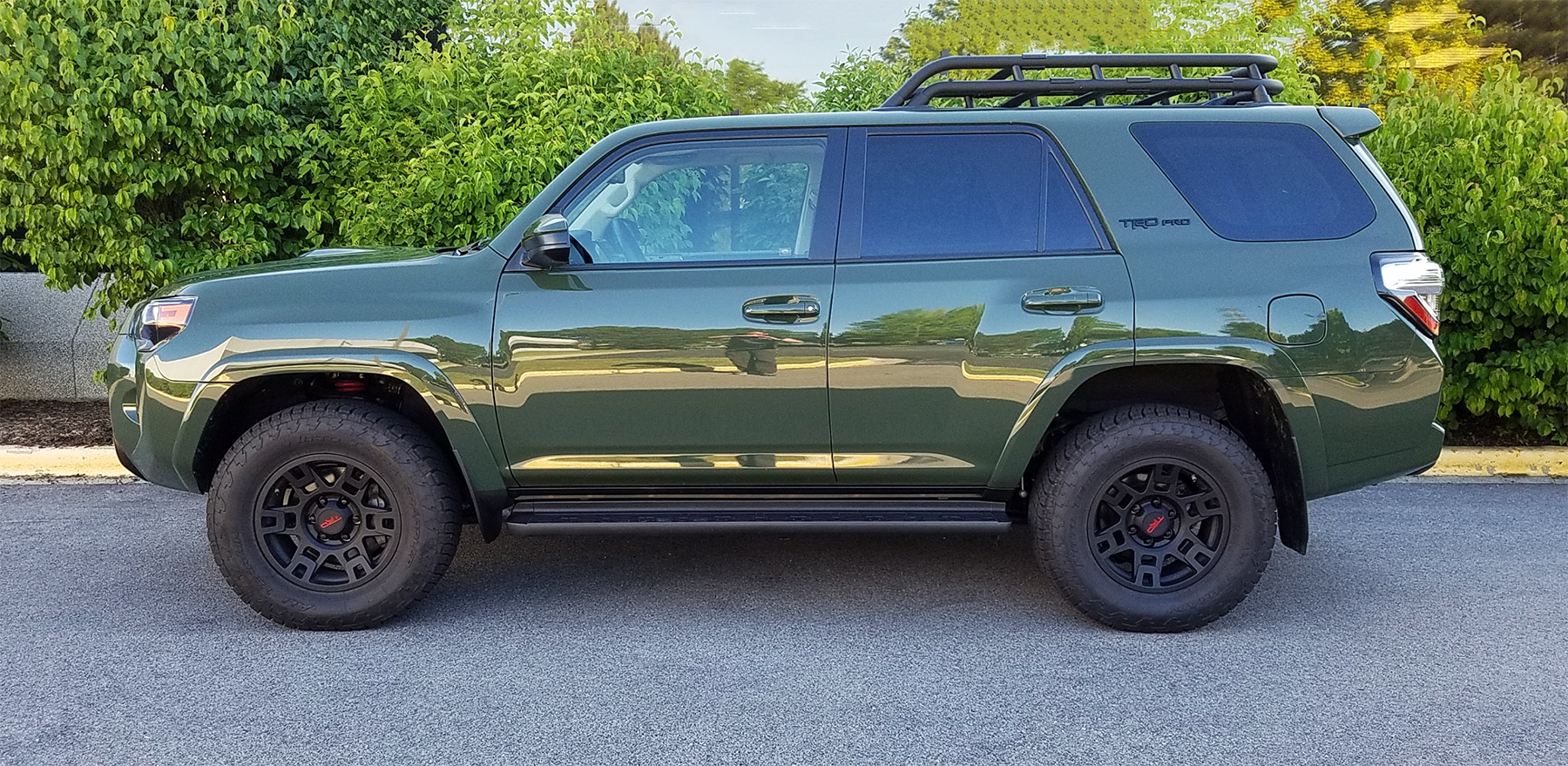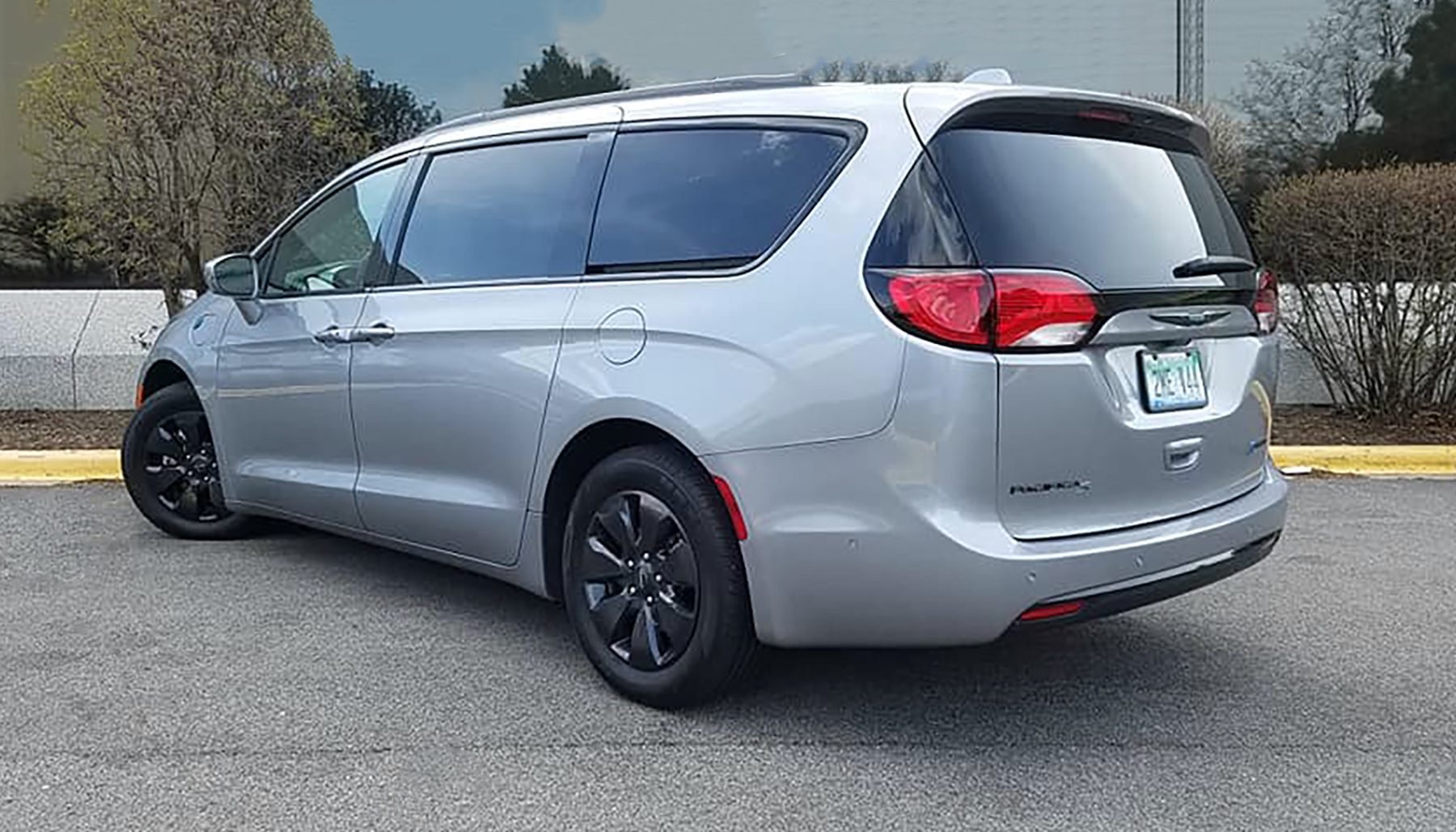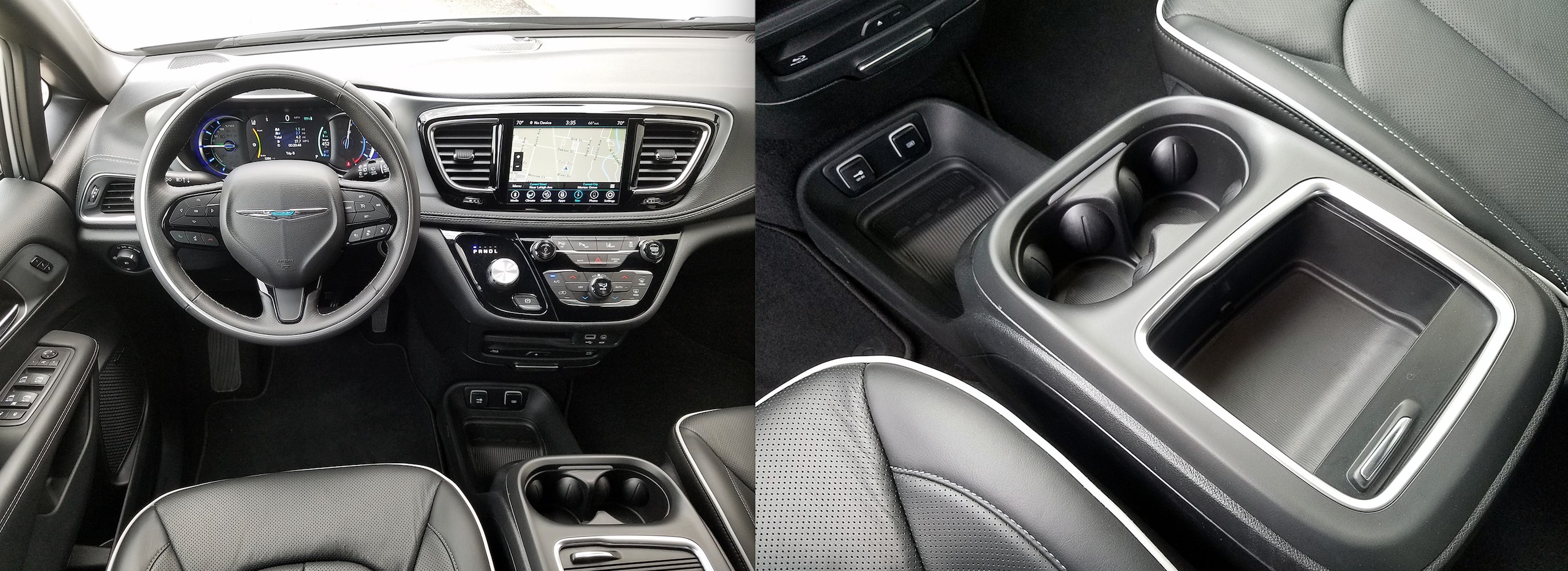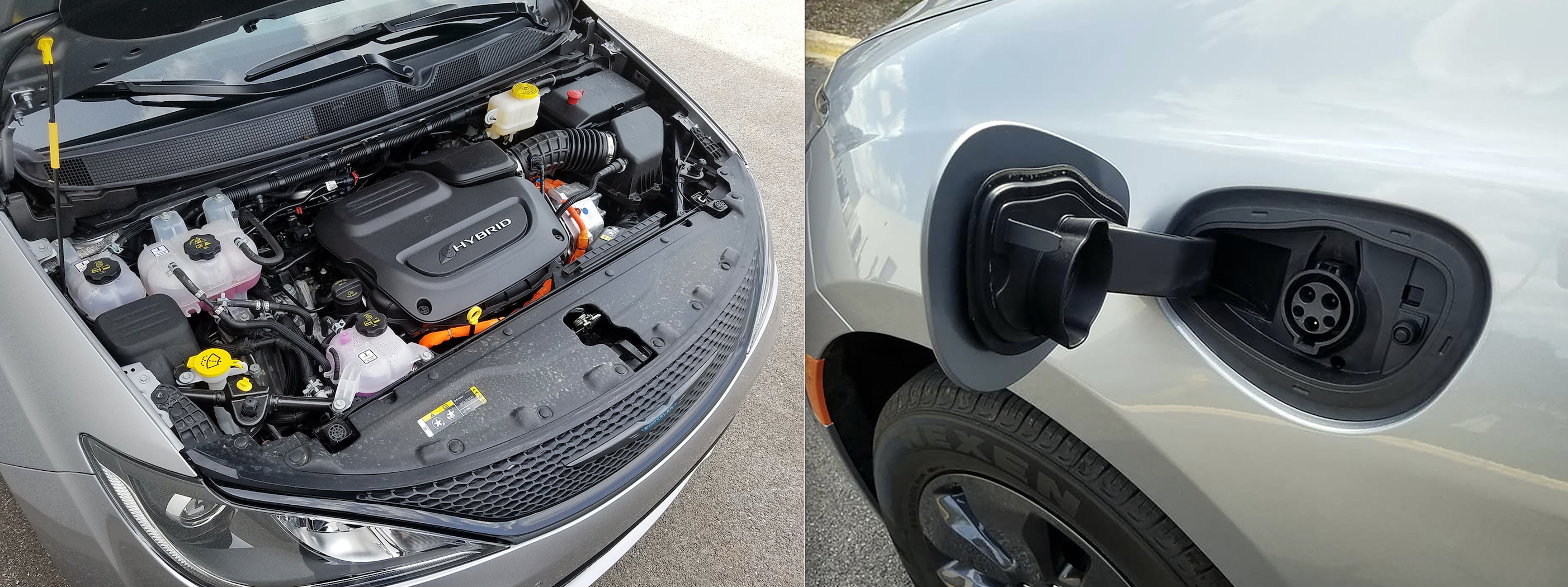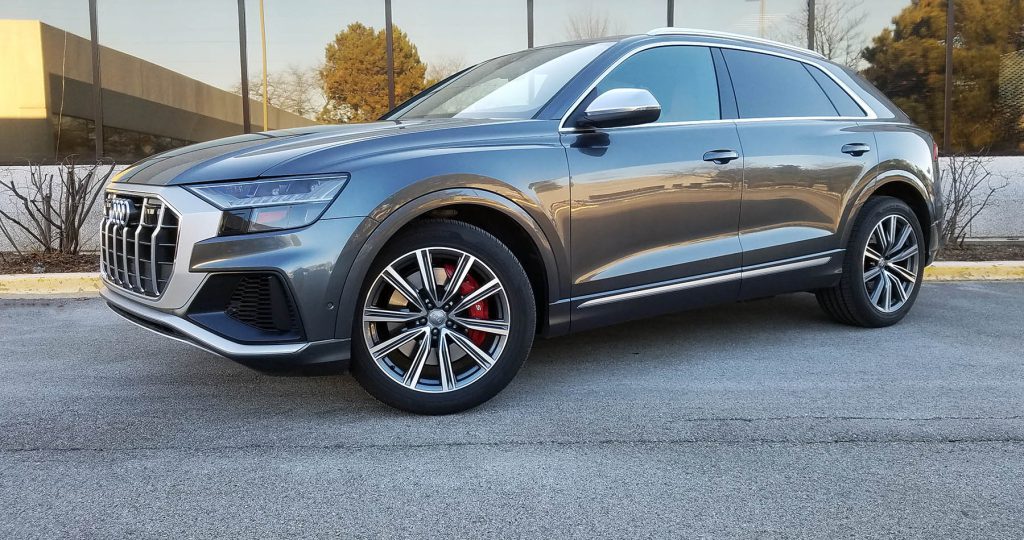
2020 Audi SQ8 Prestige in Daytona Gray (a $595 option)
 2020 Audi SQ8 Prestige
2020 Audi SQ8 Prestige
Class: Premium Large SUV
Miles driven: 778
Fuel used: 44.4 gallons
Real-world fuel economy: 17.5
| CG Report Card | |
|---|---|
| Room and Comfort | B- |
| Power and Performance | A |
| Fit and Finish | A- |
| Fuel Economy | C |
| Value | B- |
| Report-card grades are derived from a consensus of test-driver evaluations. All grades are versus other vehicles in the same class. Value grade is for specific trim level evaluated, and may not reflect Consumer Guide's impressions of the entire model lineup. | |
| Big & Tall Comfort | |
| Big Guy | A |
| Tall Guy | A |
| Big & Tall comfort ratings are for front seats only. "Big" rating based on male tester weighing approximately 350 pounds, "Tall" rating based on 6'6"-tall male tester. | |
| Drivetrain | |
| Engine Specs | 500-hp 4.0-liter |
| Engine Type | Twin-turbo V8 |
| Transmission | 8-speed automatic |
| Drive Wheels | AWD |
Driving mix: 25% city, 75% highway
EPA-estimated fuel economy: 15/21/17 (city, highway, combined)
Fuel type: Premium gas required
Base price: $89,000 (not including $995 destination charge)
Options on test vehicle: Daytona Gray pearl-effect paint ($595), Sport Package ($5900) Prestige Package ($5500), Bang & Olufsen Advanced 3D sound system ($5000), carbon vector inlays ($500)
Price as tested: $107,490
Quick Hits
The great: Authoritative acceleration; fine ride and handling balance; sophisticated, high-class interior
The good: Four-wheel steering aids handling and close-quarters maneuverability
The not so good: Thirsty for premium fuel; steep pricing; sluggish stop/start system; styling prioritizes style over maximum cargo space
More Q8 price and availability information
John Biel
During 2020 Audi cut loose a little bit by inserting hotted-up versions of its premium-large SUVs into the Q7 and Q8 product lines. At a minimum they boast 500 horsepower as the SQ7 and SQ8—and RS variants are cranked up to 591 ponies in pursuit of a seat at the table with other German super utes from BMW, Mercedes-Benz, and Porsche.
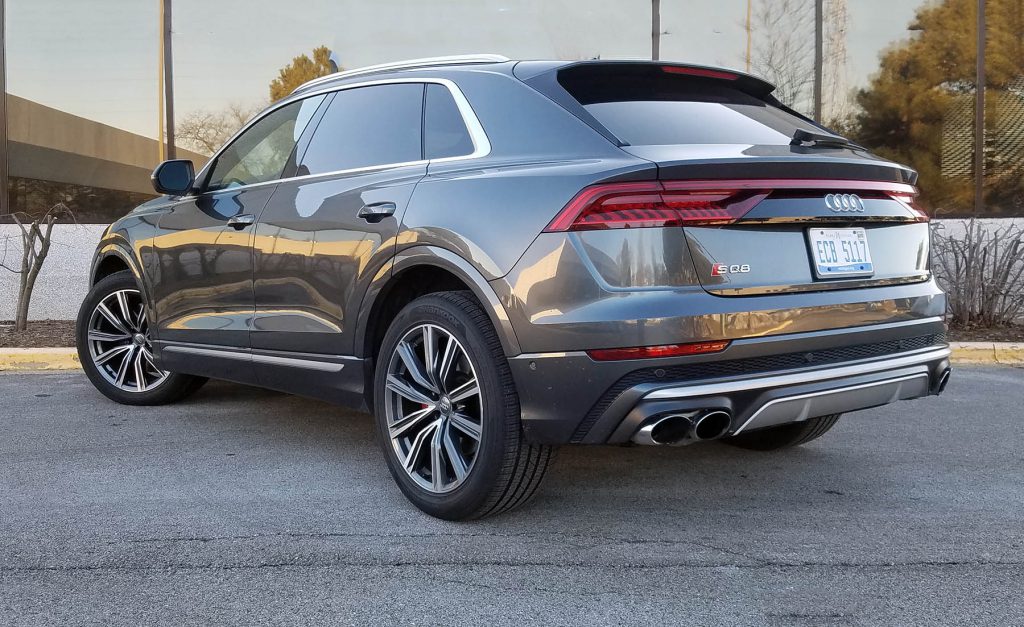
The Audi Q8 debuted for 2019 as a sleeker two-row version of the three-row Audi Q7 SUV. The high-performance SQ8 joined the lineup as a mid-2020 addition; among other upgrades, it gets a twin-turbo V8 in place of the Q8’s turbo V6.
In all its forms, the Q8 is the smaller but costlier of the two Audis, a more dramatically styled, sleeker-roof, 2-row variant of the 3-row Q7. The Q8 shares the Q7’s basic platform and 117.9-inch wheelbase, but lops off 3.3 inches of overall length and sheds some cargo space beneath its “faster” roofline. While the V6 Q8 comes in three states of trim, the SQ is limited to Premium Plus and better-equipped Prestige models.
Test Drive: 2021 Dodge Durango SRT Hellcat

The SQ8’s sophisticated dashboard layout features Audi’s Virtual Cockpit configurable digital gauge cluster, a twin-screen infotainment interface, high-gloss piano-black trim, and nicely integrated HVAC vents.
With the SQ8’s midyear debut, it wasn’t until after the new year that a ’20 example worked its way through the media-fleet channel to Consumer Guide Automotive editors. However, that same timetable left Audi with little time—or need—to make substantive changes for 2021. (Standard blind-spot and rear cross-traffic alerts are added to all models. Prices of most Q8s are raised slightly, in part due to a $100 rise in the delivery charge, though the V6 Premium Plus is actually $50 cheaper.) Our tester was a $95,495 Prestige that was optioned up to a considerable $107,490.
Test Drive: 2021 Mercedes-Benz AMG GLE63 S
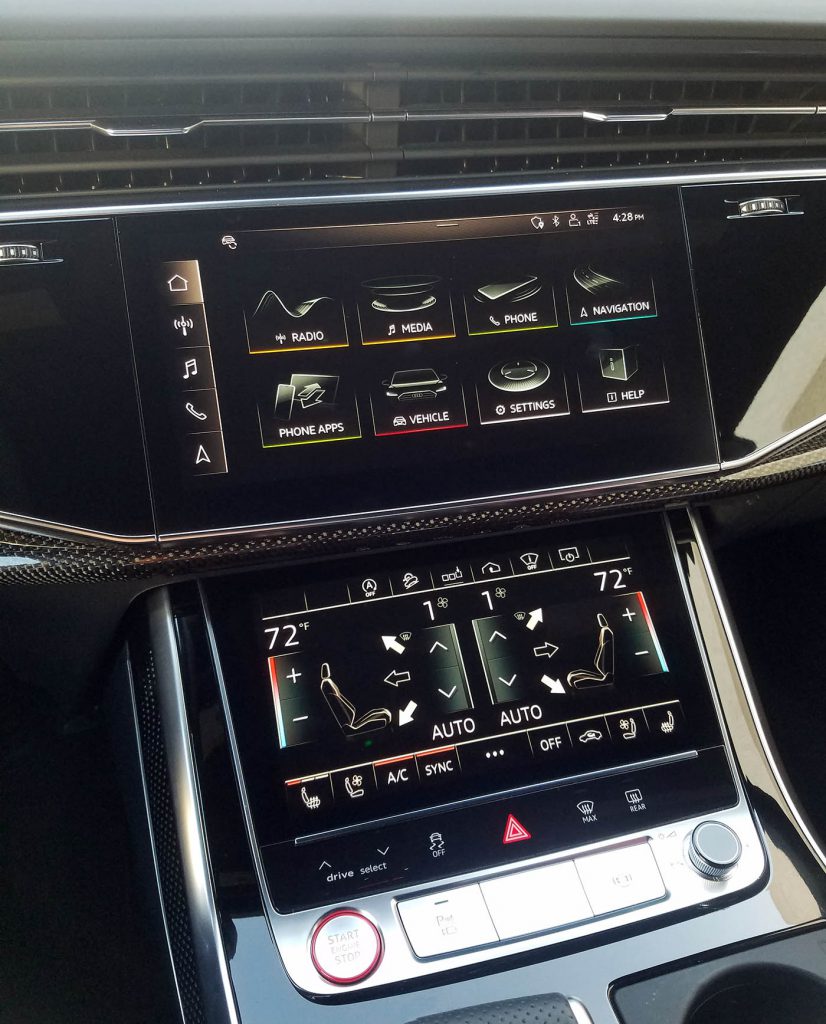
The SQ8’s twin-screen infotainment system layout provides plenty of space for a clear control layout. However, compared to other touchscreen systems we’ve tested, the Audi haptic-feedback touchscreens require a more-deliberate finger-push in order for the input to register.
Going by what you’ll see on the window sticker, the Prestige is effectively created from an option package tacked on to the Premium Plus. In 2020 that group included HD matrix-design headlights, Driver Assistance package (including adaptive cruise control), head-up display, heated rear seats, power soft-close doors, and sunshades for the windows in the rear doors and tailgate. Part of the $600 price increase for the ’21 SQ8 Prestige is invested in additional leather trim on the instrument panel, door armrests, and center console.
Naturally, there is plenty more standard equipment, and the test truck was filled out with $11,995 in optional extras for appearance, audio, and chassis. Some of the fun stuff that comes in the base price includes a hands-free tailgate; aluminum window trim, roof rails, and exhaust tips; heated power-folding memory mirrors; Valcona-leather upholstery (in vibrant Arras Red in the tester); heated and ventilated front S sport seats; panoramic sunroof; 4-zone automatic climate control; and HD and satellite radio playing on a Bang & Olufsen 3D sound system.
What the SQ8 owner is really paying for is the twin-turbocharged 4.0-liter V8 and a chassis bestowed with all-wheel steering and adaptive air suspension. The one CGers drove went a little further with a Sport Package that added active roll stabilization and a torque-vectoring rear differential. Q8s of every stripe come with an 8-speed automatic transmission and quattro all-wheel drive.
The powerplant backs up its 500 horsepower with 568 lb-ft of torque, easily enough for quick getaways (with an affirming exhaust burble) or easy cruising in “Comfort” mode, one of six selectable driving modes. The peak setting for on-road performance is “Dynamic.” It delays upshifts from the Tiptronic gearbox and makes them crisper when they do happen, but the trans is smooth and cooperative just about all the time, and paddle shifters give drivers the opportunity to work things out for themselves if they prefer. One complaint that we could lodge is a sluggish refiring of the engine’s stop-start function. Fuel economy isn’t the top line of the SQ8’s resume. The EPA estimates it will get 15 mpg from city driving, 21 mpg in highway operation, and 17 combined. This driver’s 103.7-mile test stint—45 percent of it under city-style conditions—worked out to 16.4 mpg.
Test Drive: 2020 Cadillac CT5-V

There’s ample room for adults in the front and rear seats, and the front sport seats offer a fine mix of comfort and support. The Arras Red leather upholstery looks and feels great.
During our test, the SQ8 handled very well and rode smoothly in Comfort. Steering and damping both get firmer in Dynamic for a heightened sense of control, but ride avoids crossing over into hard territory. The speed-dependent all-wheel steering heightens maneuverability and precision by counter steering at the rear wheels at speeds under 31 mph but turning in concert with the front wheels above 50 mph. The SQ starts out about 0.6 inch lower than Q8, and the sport air suspension will lower it another 0.6 inch at highway speeds to reduce aerodynamic drag. (The system can also raise the vehicle on demand for better off-road ground clearance.) The action of the roll stabilizers and sport differential come into play to support cornering performance.
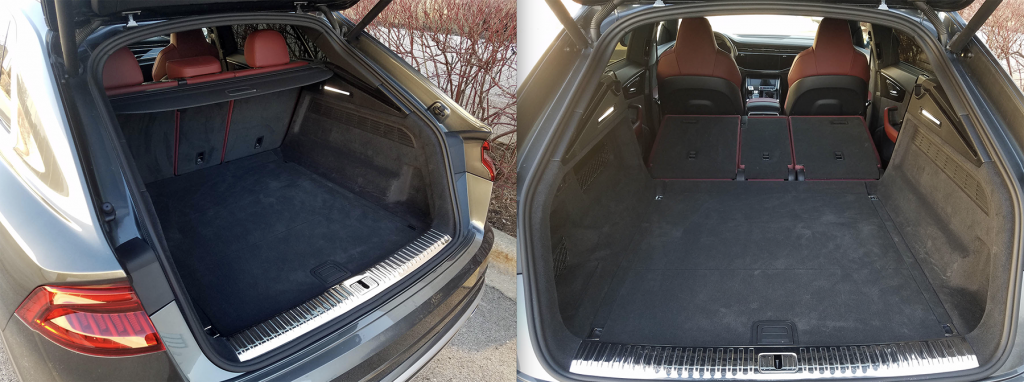
The swoopy Q8 roofline cuts into maximum cargo space, but there’s still respectable room in the SQ8’s nicely finished cargo area: 30.5 cubic feet behind the rear seats, and 60.7 cubic feet with the rear seat backs folded.
While all this is going on beneath them, passengers will enjoy fine room in both rows, with second-row headroom better than in some 2-row SUVs that are going for the same high-style look. You won’t get three adults across the back seat comfortably, however. Doors open wide for easy passage. The nicely finished sport seats are comfortable, and there’s a sophisticated “technical” look to the design and detailing of the cabin surfaces. A new-generation MMI control system drops the rotary/push-button console dial for two touchscreens with haptic feedback, one for climate and one for everything else. It is modestly better for making audio presets and selections. There’s lots of space for information displays on the “virtual cockpit” screen that includes driving gauges. Stalks off the steering column control lights and wipers but can’t be seen easily through the steering wheel. Drivers will have to learn them practically by feel to properly activate a desired function.
Test Drive: 2020 Alfa Romeo Giulia Ti Lusso
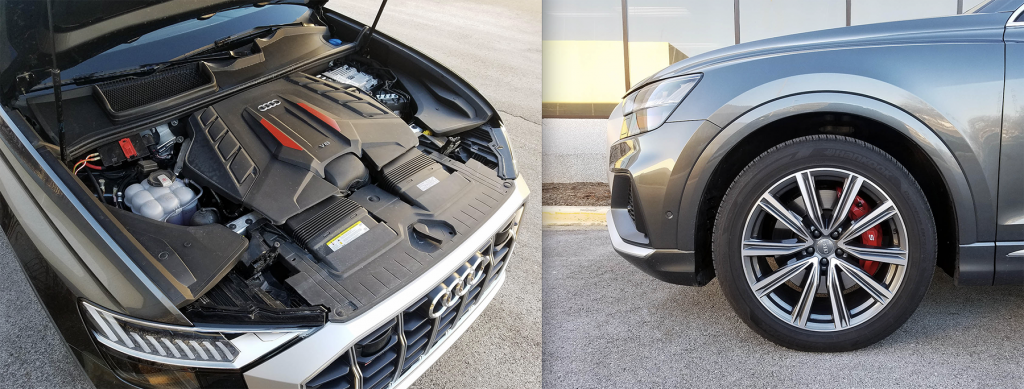
The SQ8 is powered by a brawny twin-turbocharged 4.0-liter V8 that puts out 500 horsepower and 568 lb-ft of torque. Twenty-one-inch “5-V-Spoke” wheels on all-season tires are standard equipment.
Cabin storage choices are a big but low-set glove box, a console box pretty much filled by the wireless charger, a small flip-down cubby to the left of the steering column, pockets in all four doors, net pouches behind the front seats, and cup holders in the center console and pull-down rear armrest. Rear 40/20/40 seats fold at a slight upward angle, but match a slope in the cargo floor, so loads will go straight through despite a narrow gap between folded seats and load floor. Two small net pouches for incidentals are on the left side of the carpeted cargo bay. Even with rear seats up there’s enough load space for a bit of luggage or lots of groceries.
The Audi SQ8 adeptly mixes comfort and performance. If you really want a slice of style on the side, it’s got that too.
Test Drive: 2020 BMW X3 M Competition
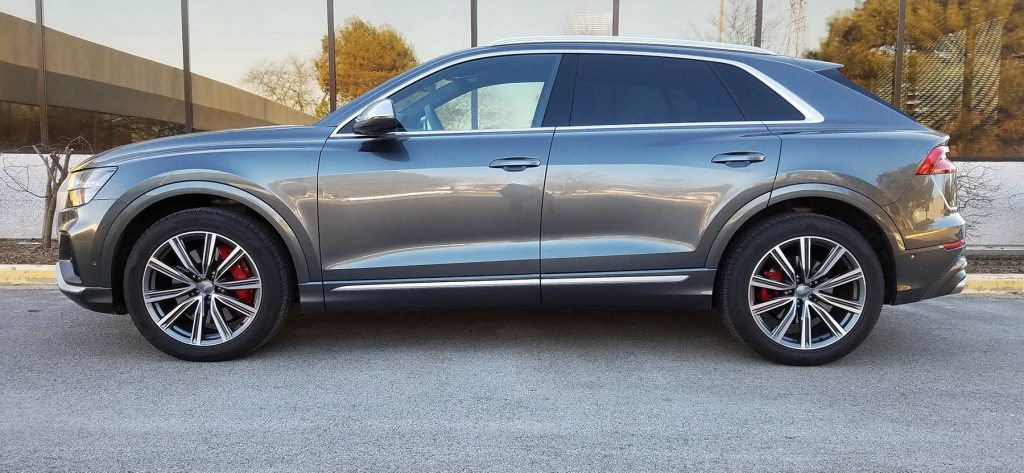
If your tastes in a luxury SUV favor muscular acceleration, crisp handling, and sleek styling over more-practical concerns–and you’re comfortable with a buy-in that can top six figures–then the Audi SQ8 should be on your list.
Listen to the very entertaining Consumer Guide Car Stuff Podcast
2020 Audi SQ8 Gallery
(Click below for enlarged images)
Consumer Guide Car Stuff Podcast, Episode 57; 2021 Consumer Guide Best Buys
For GREAT deals on a new or used Nissan check out Mossy Nissan Kearny Mesa TODAY!

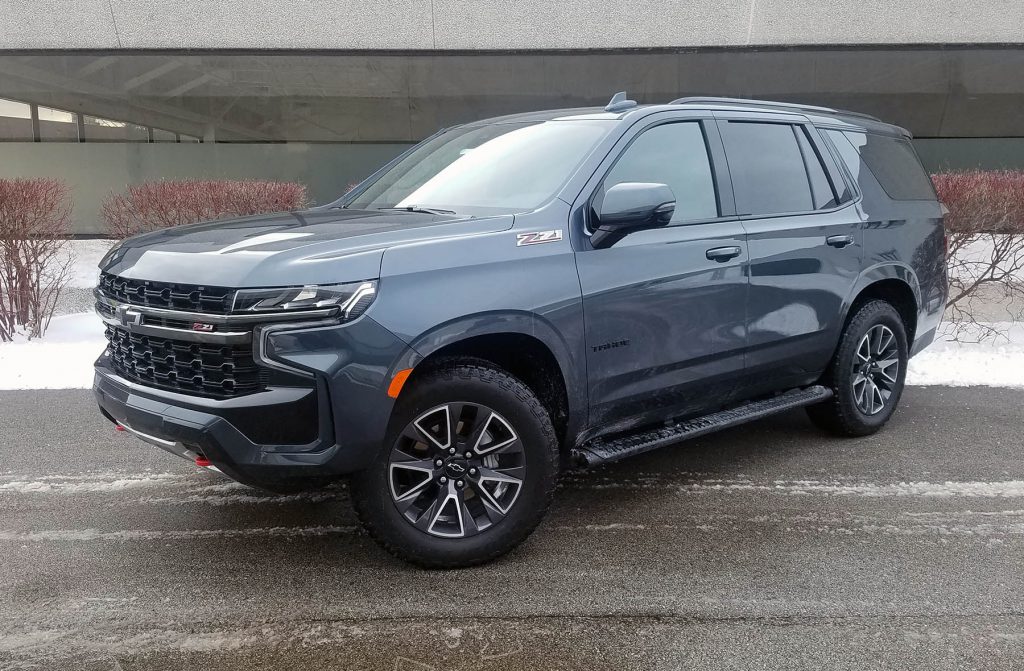

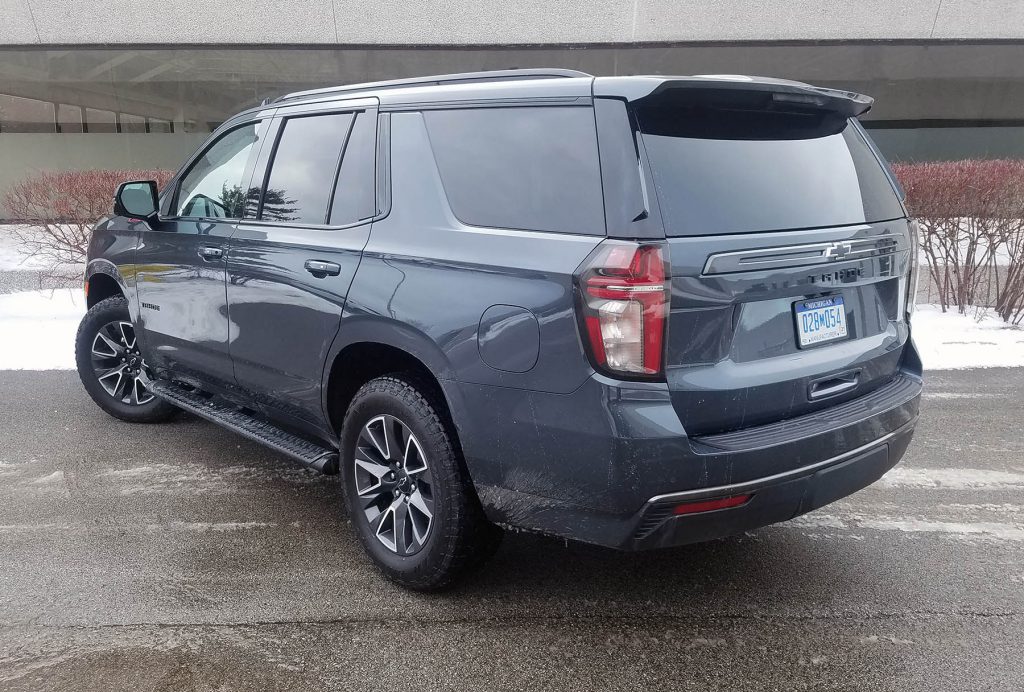
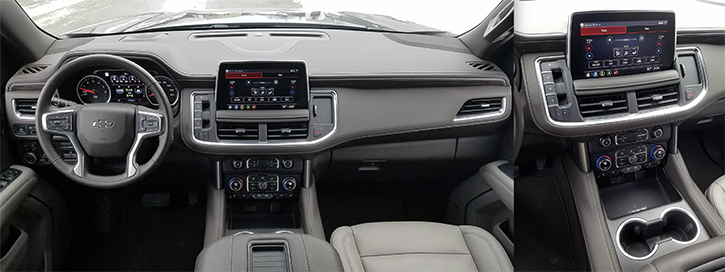
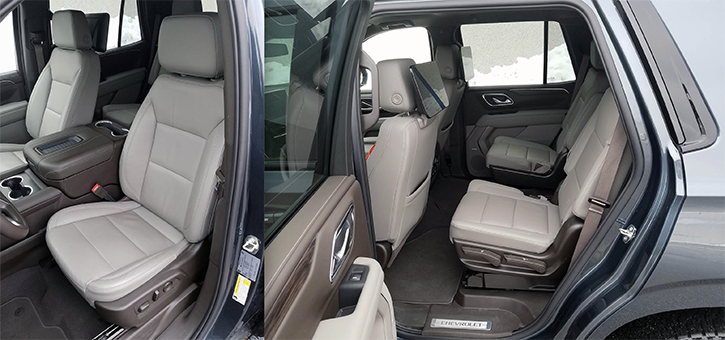


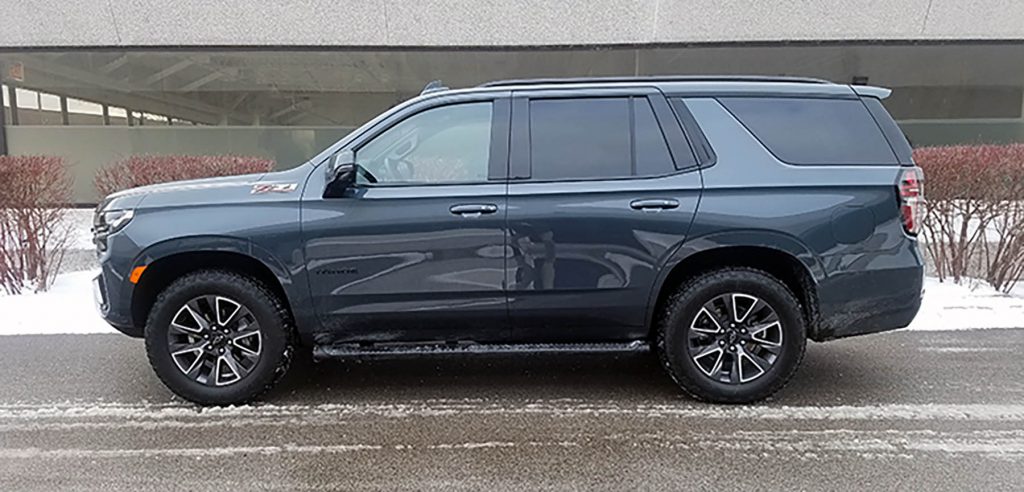
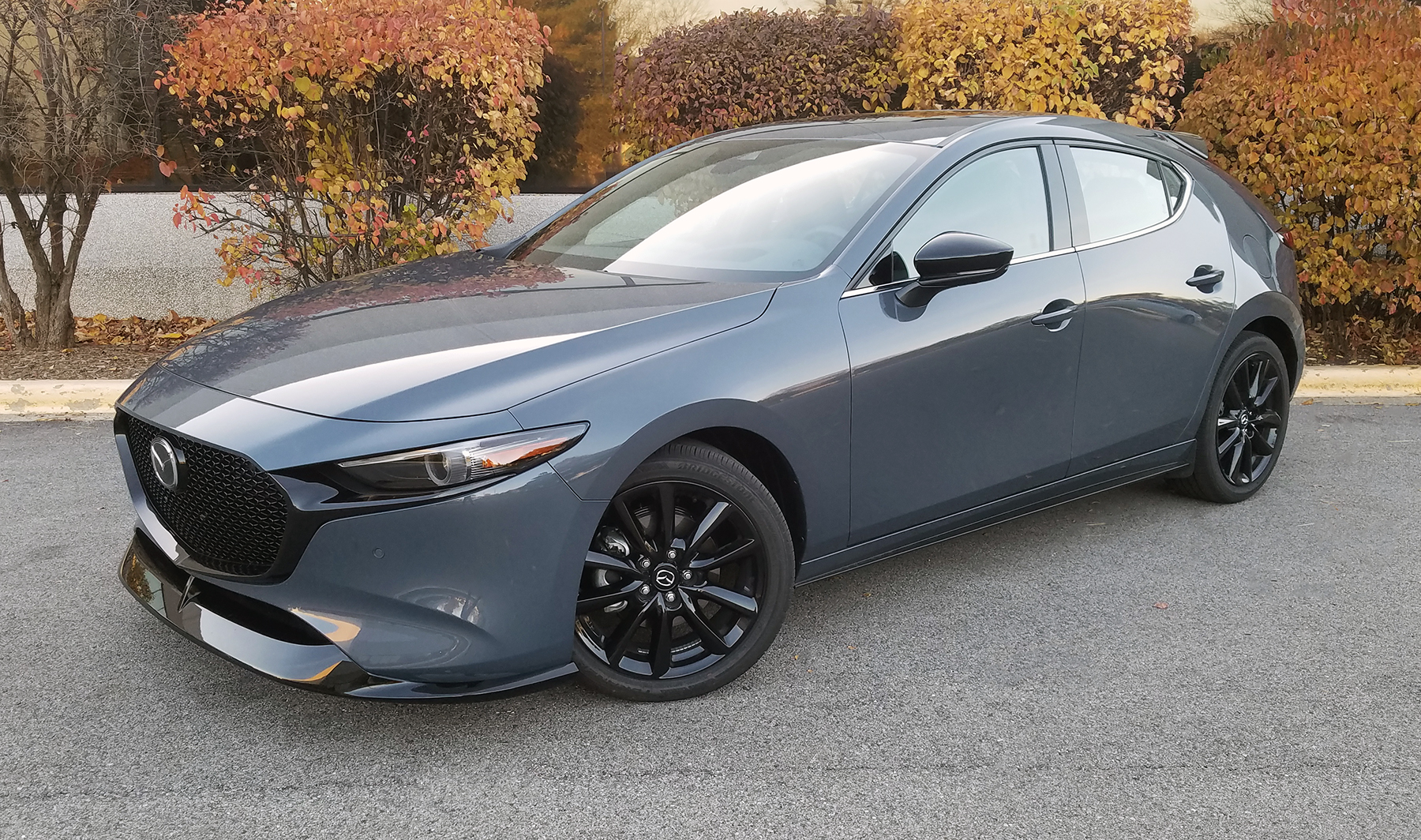

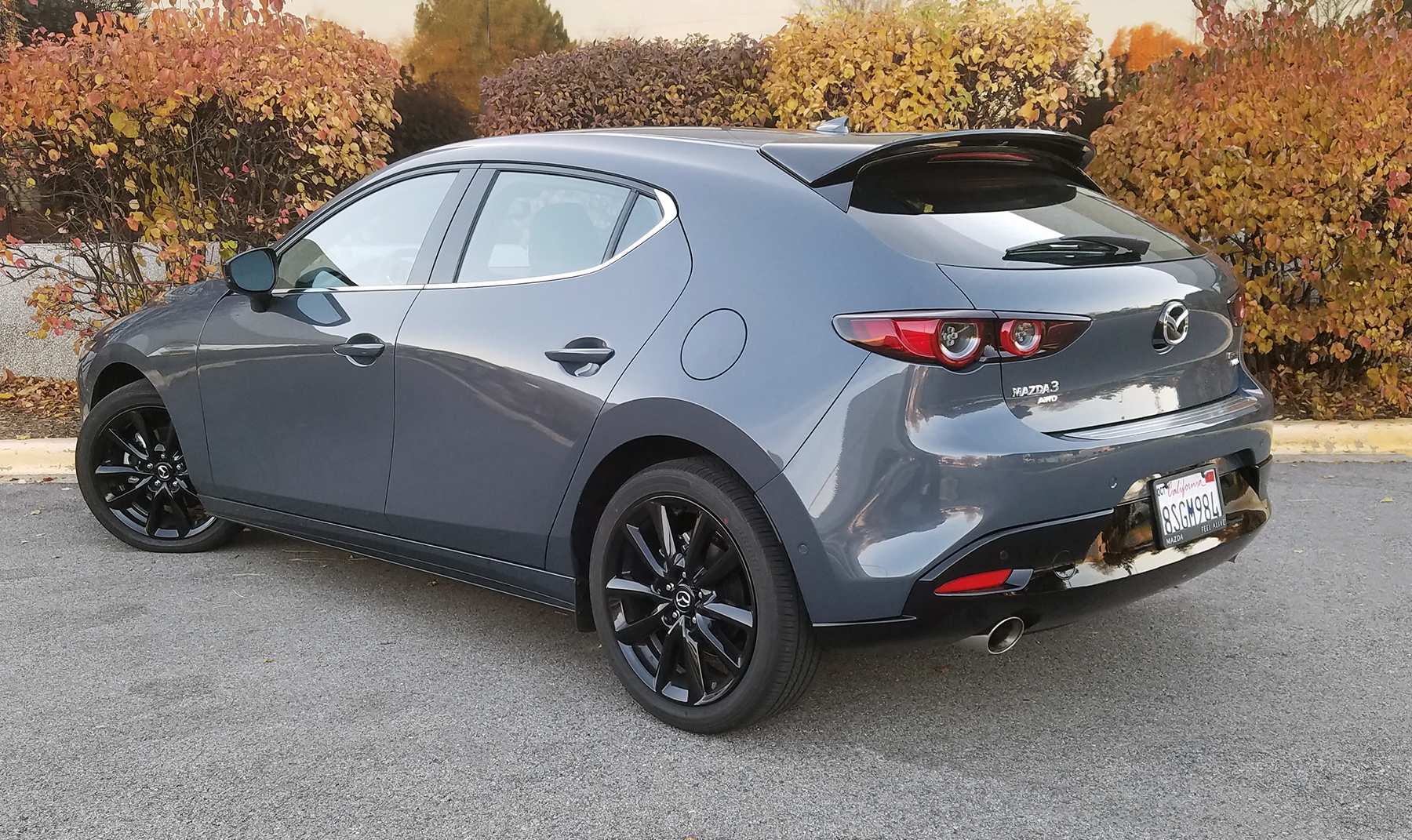

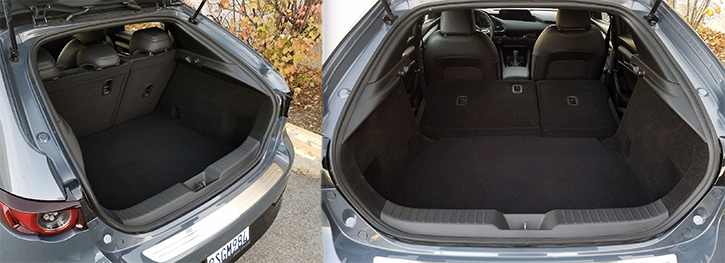

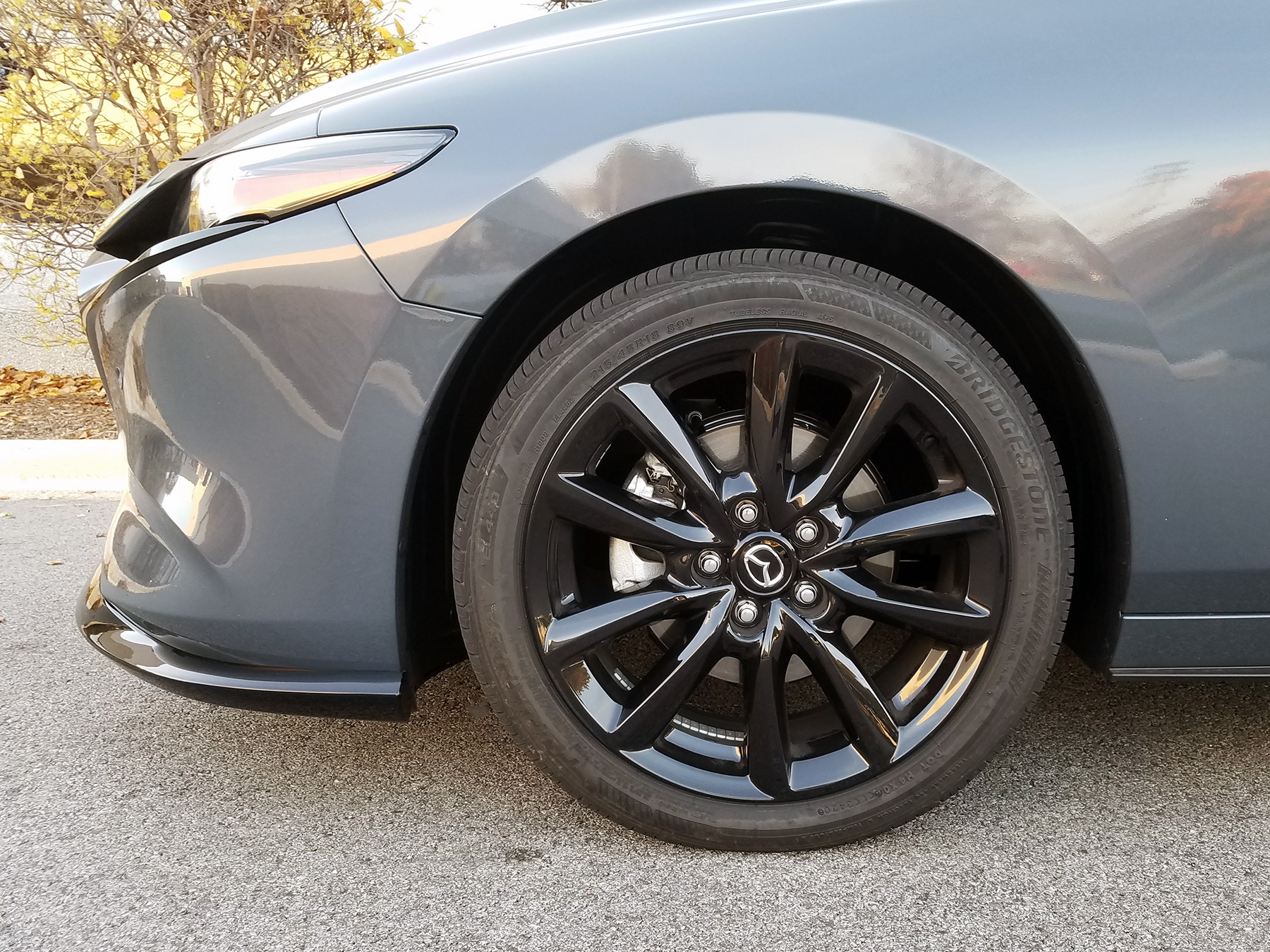
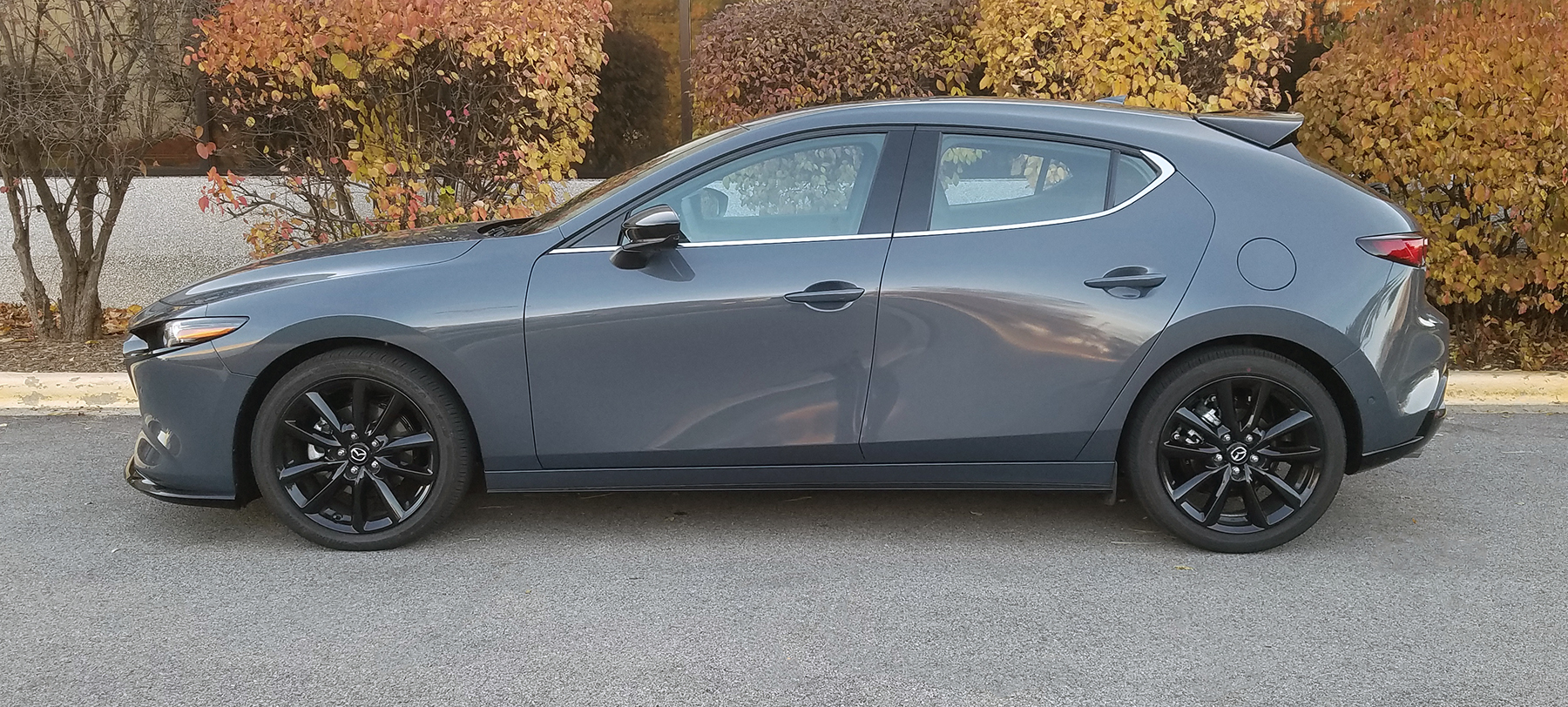
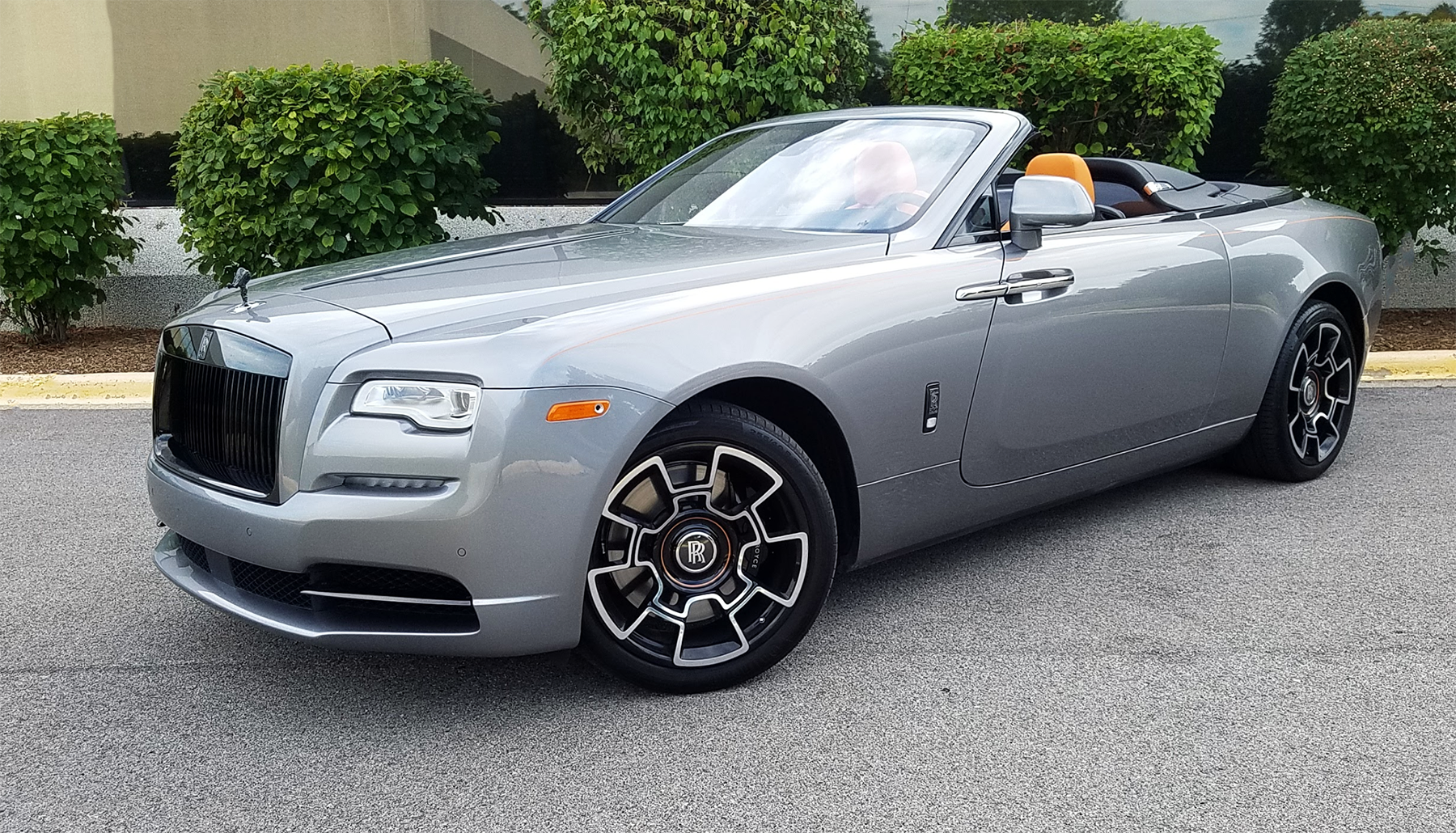


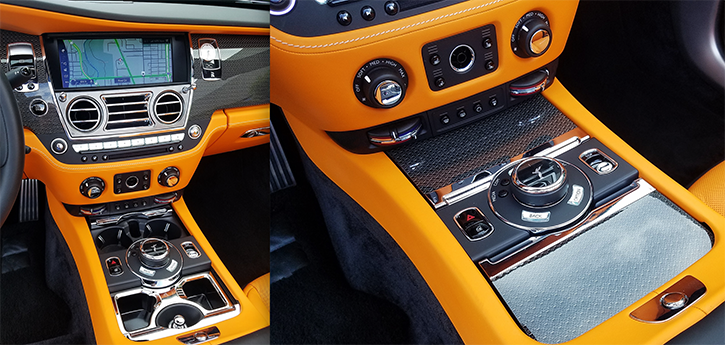
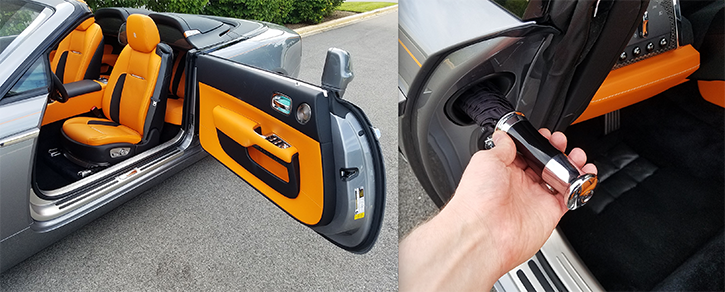

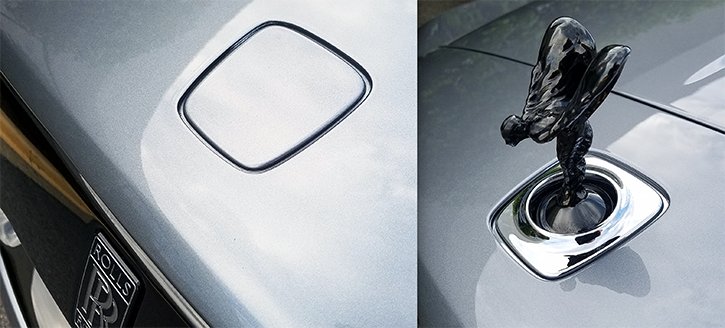
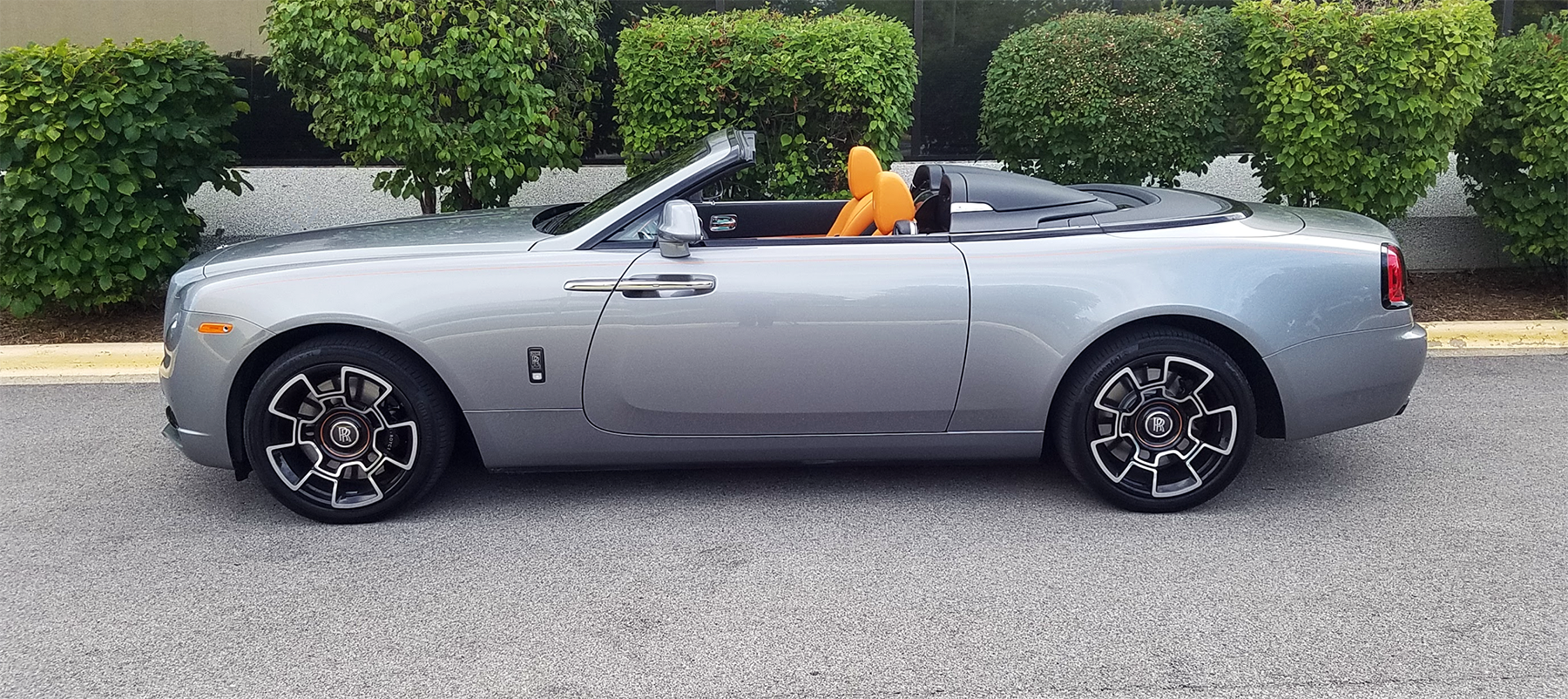
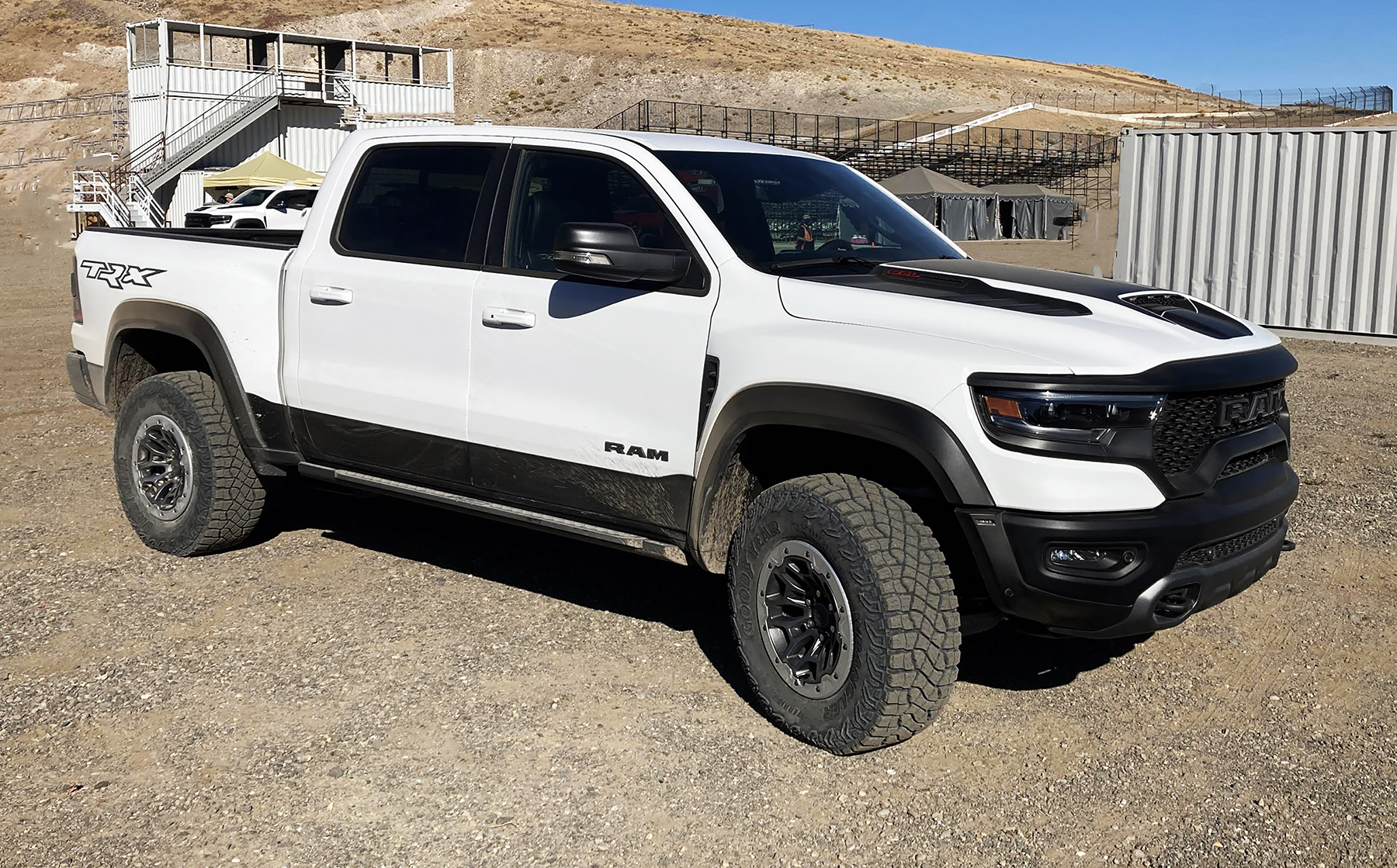
 By Don Sikora II
By Don Sikora II